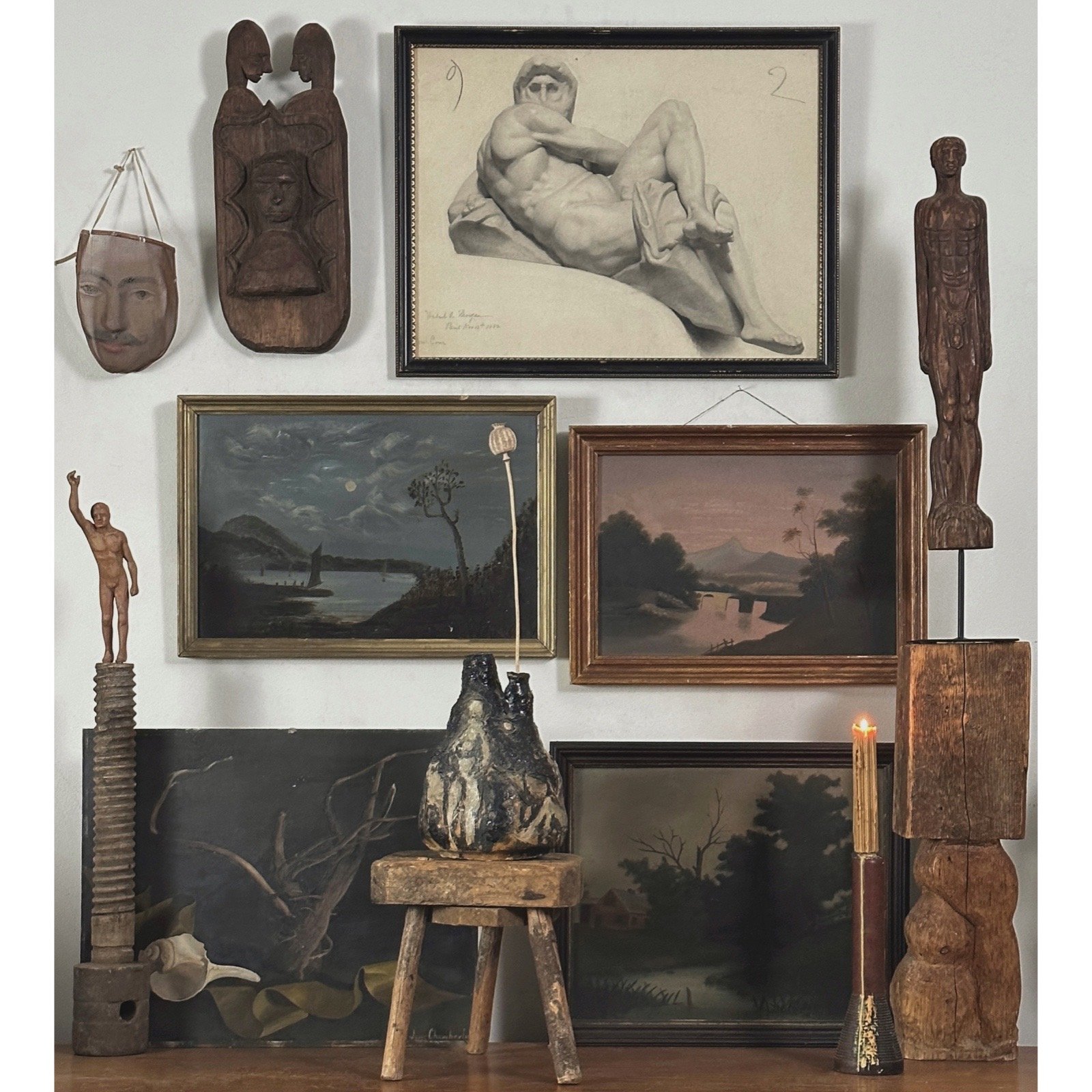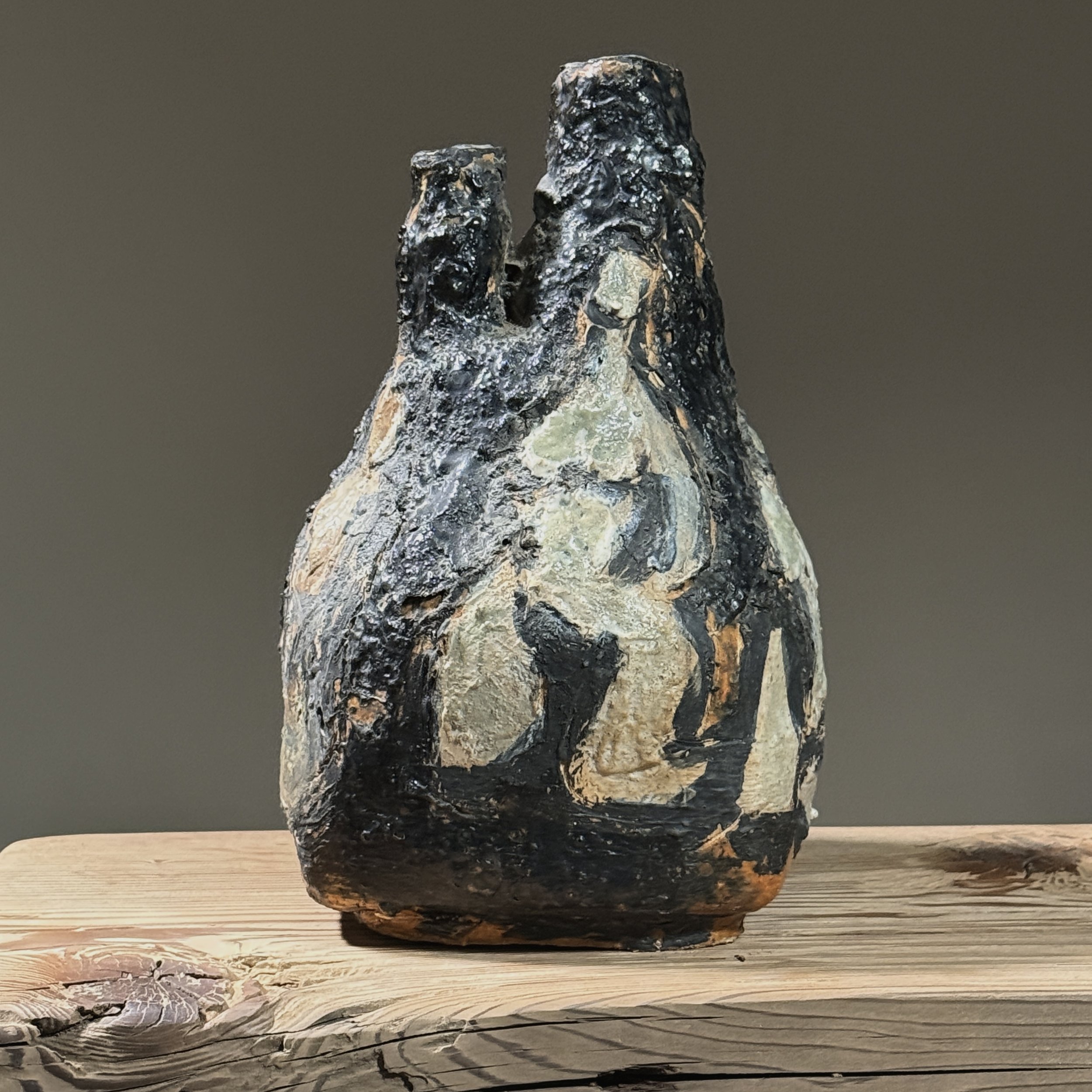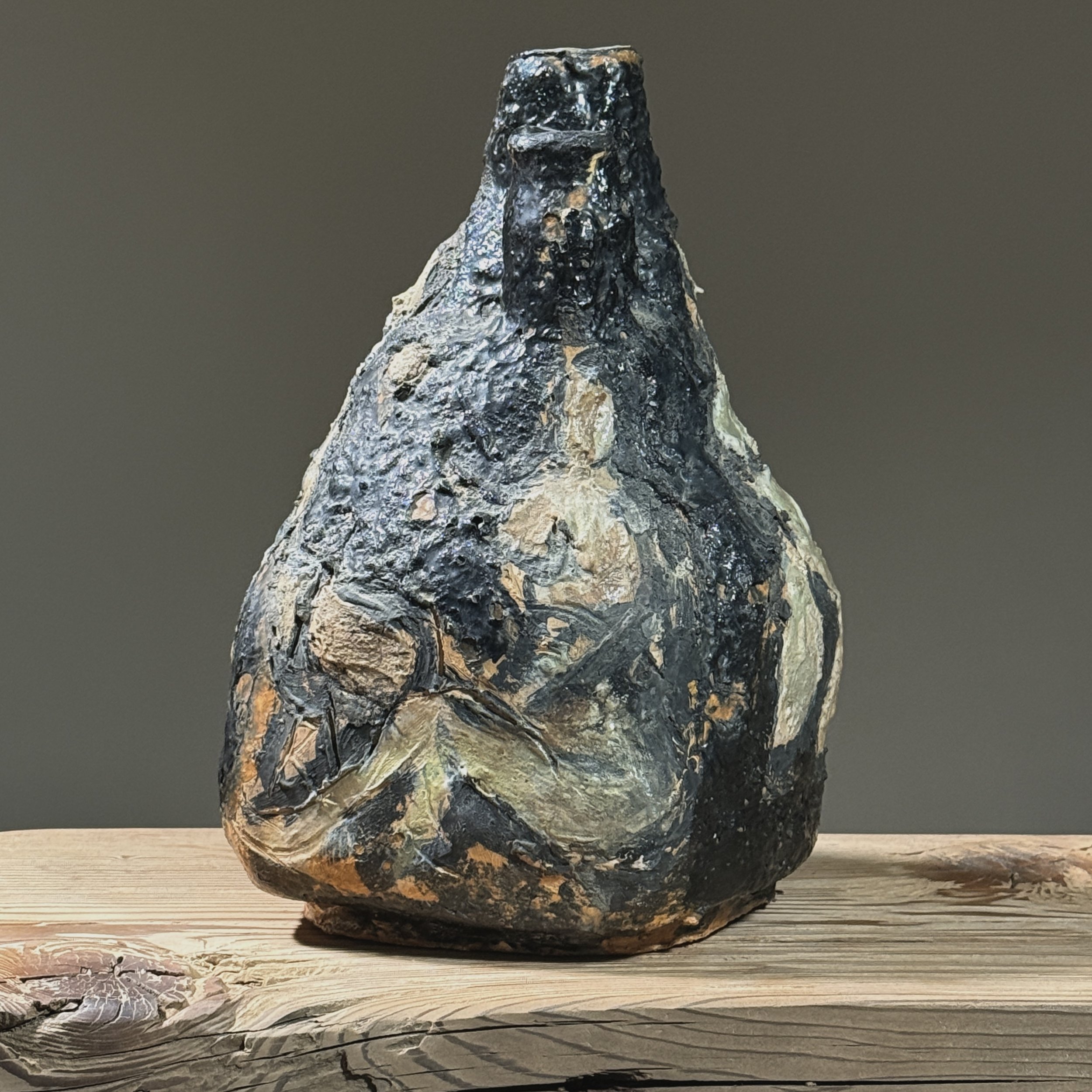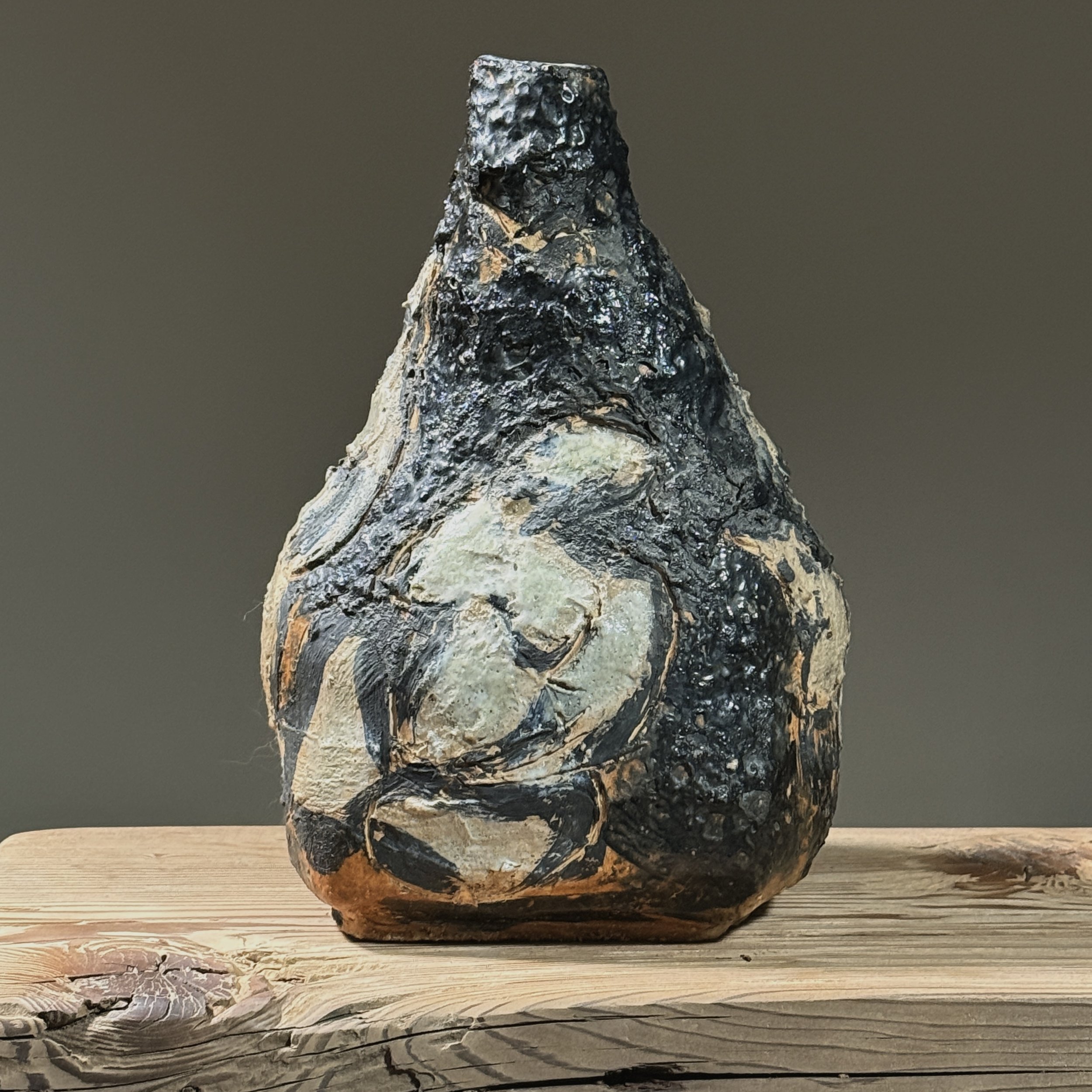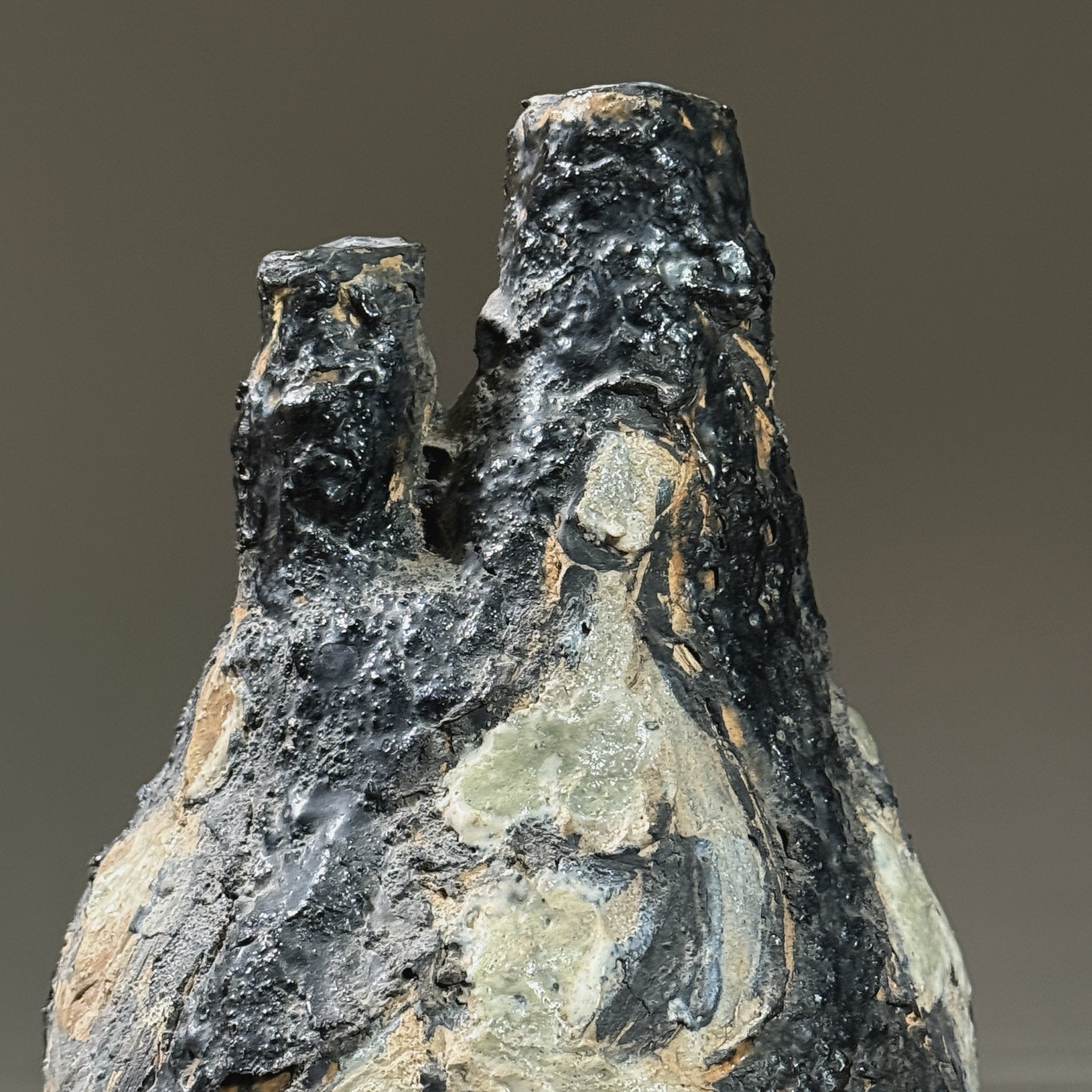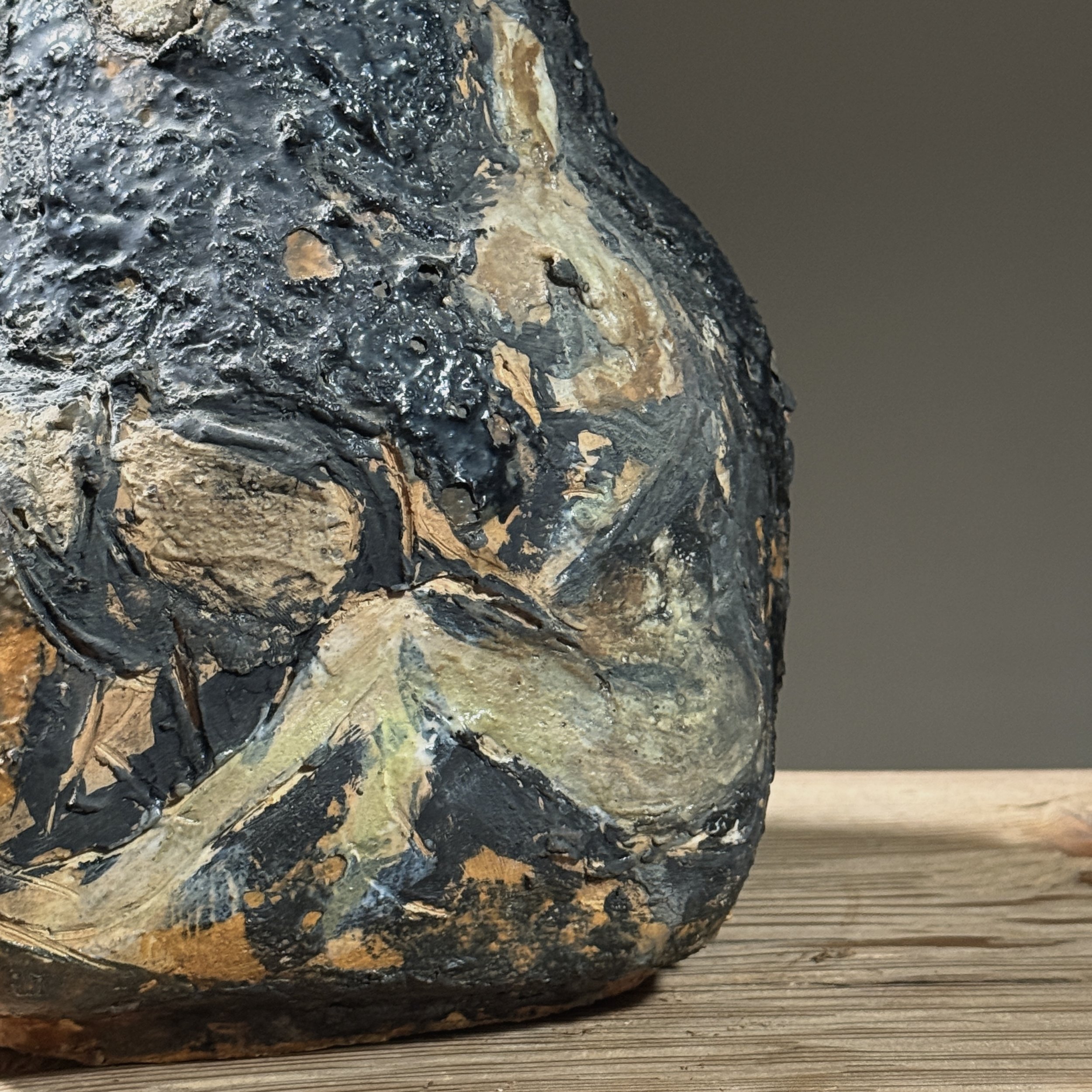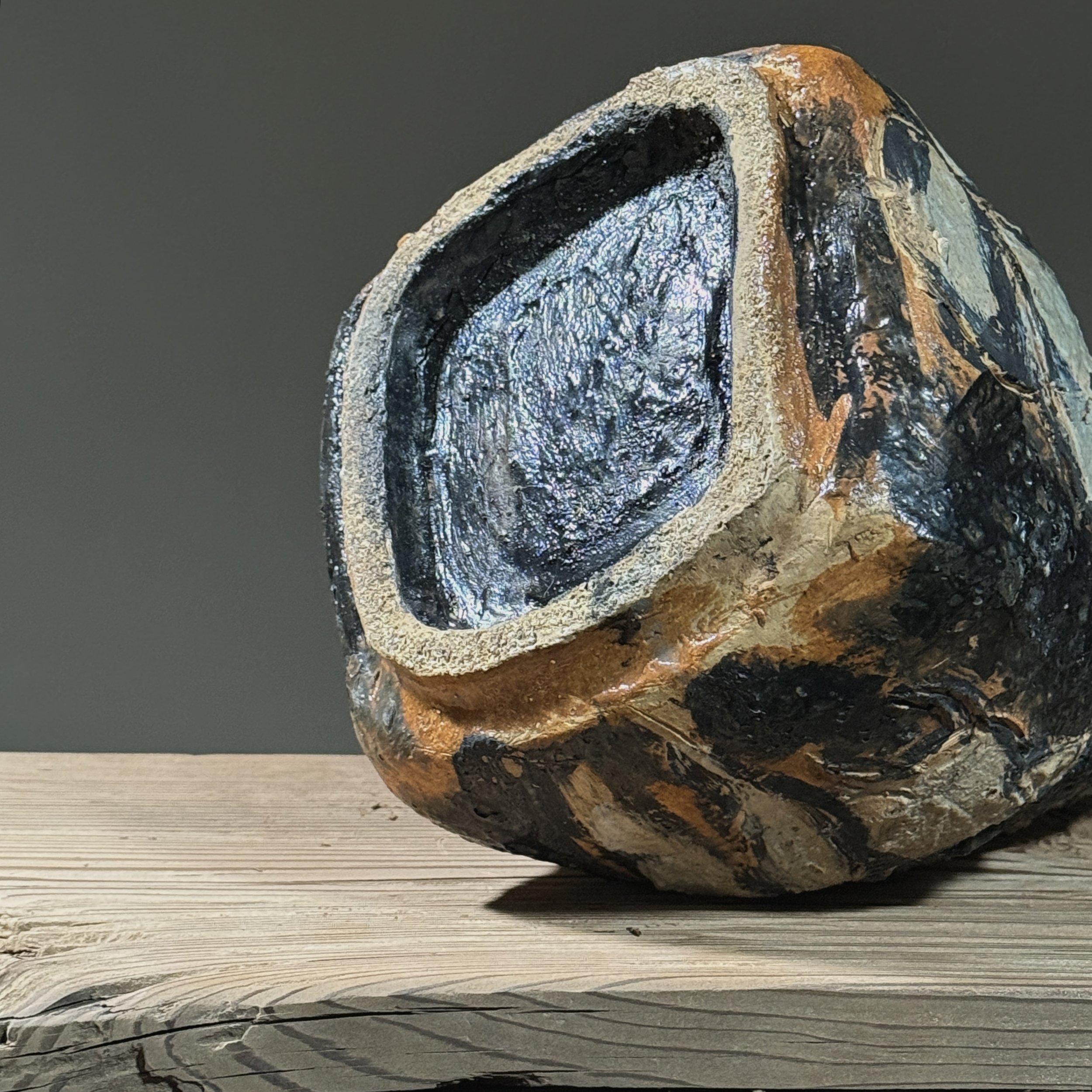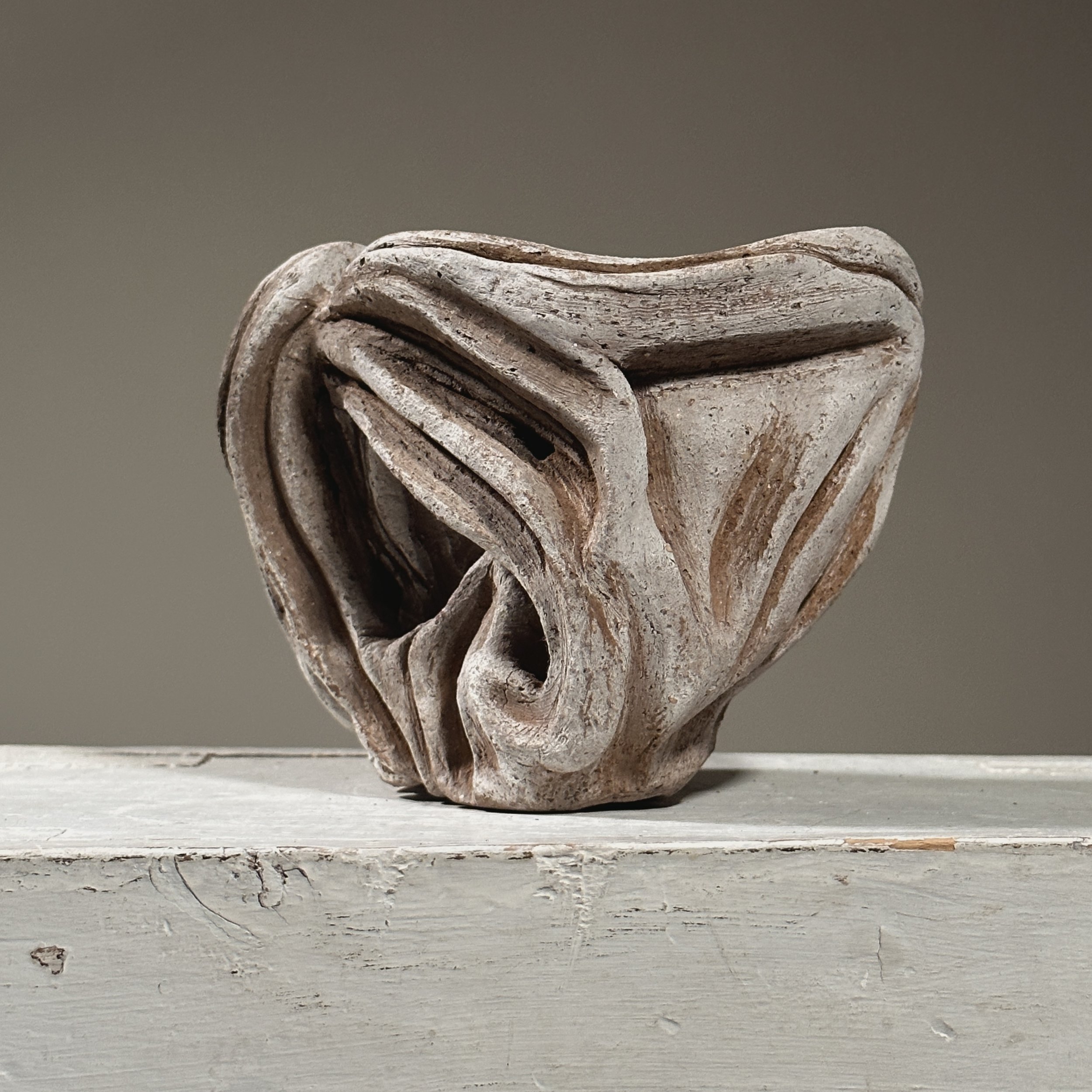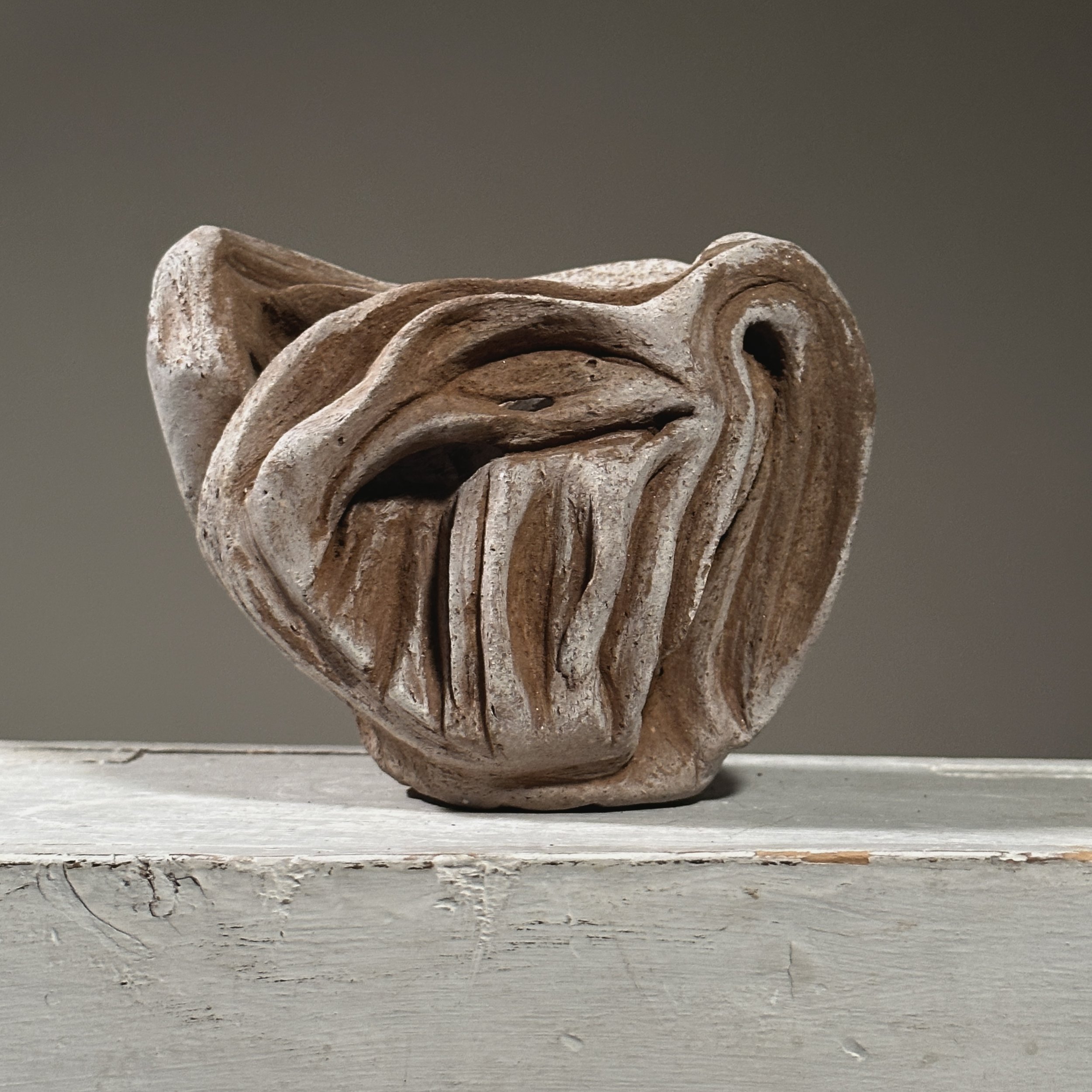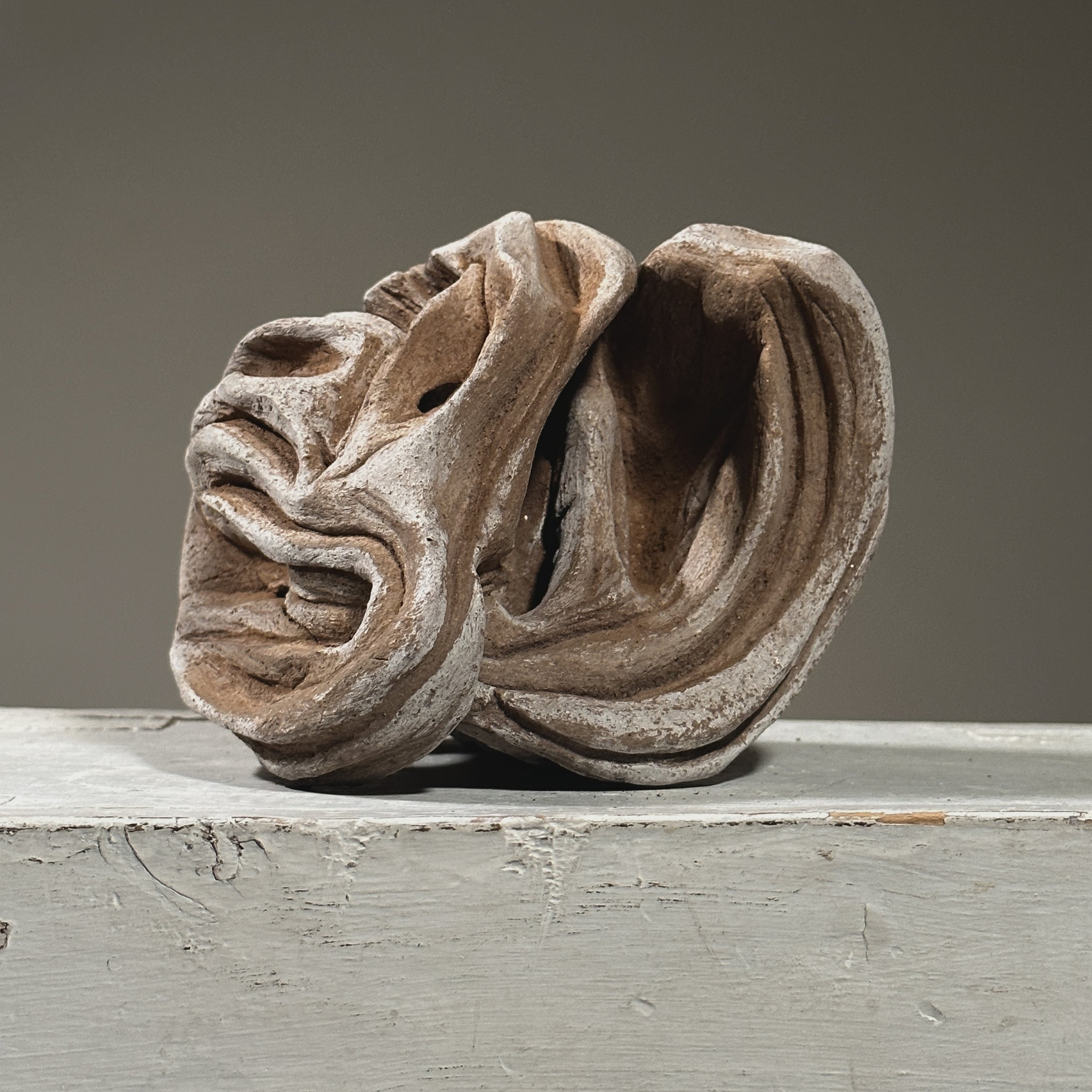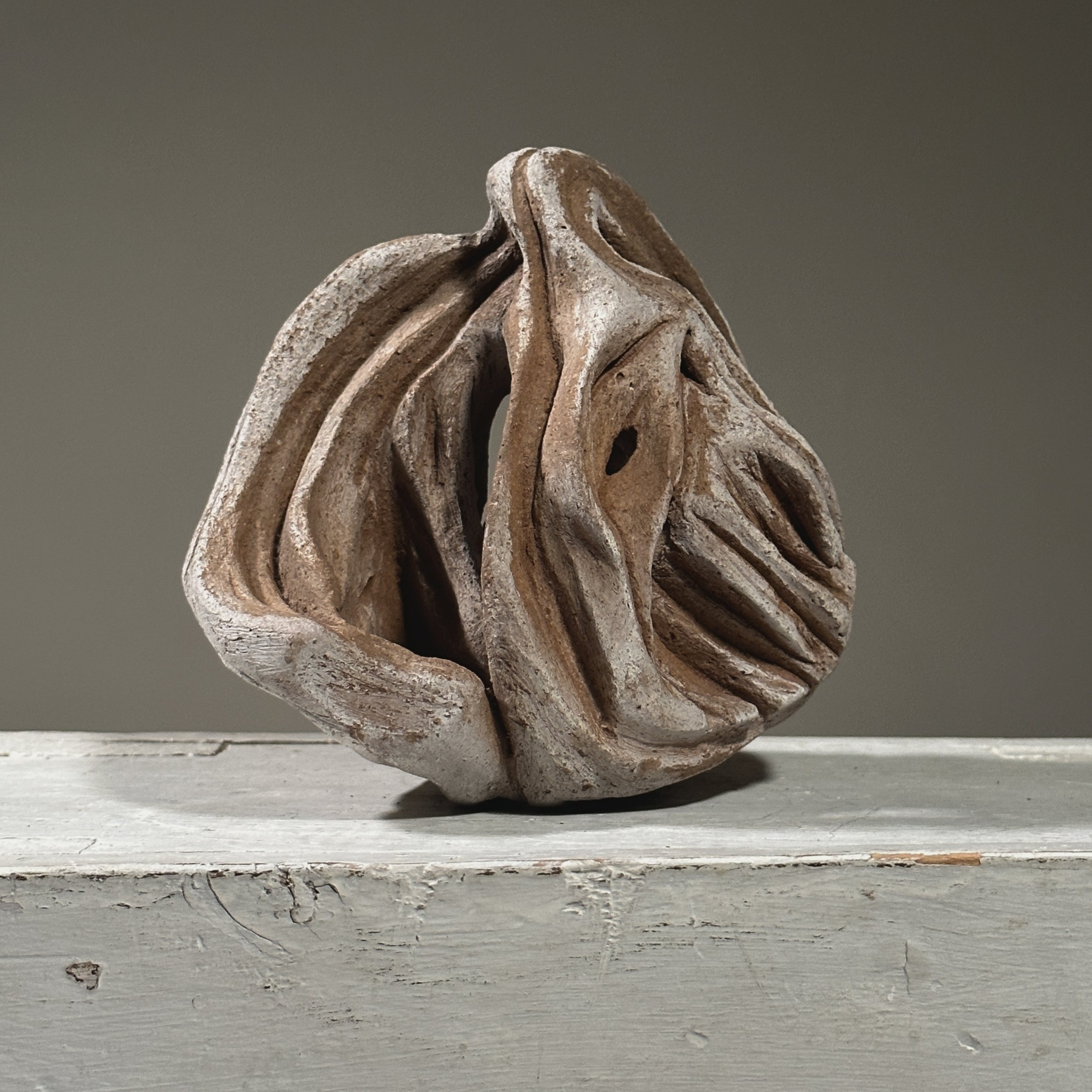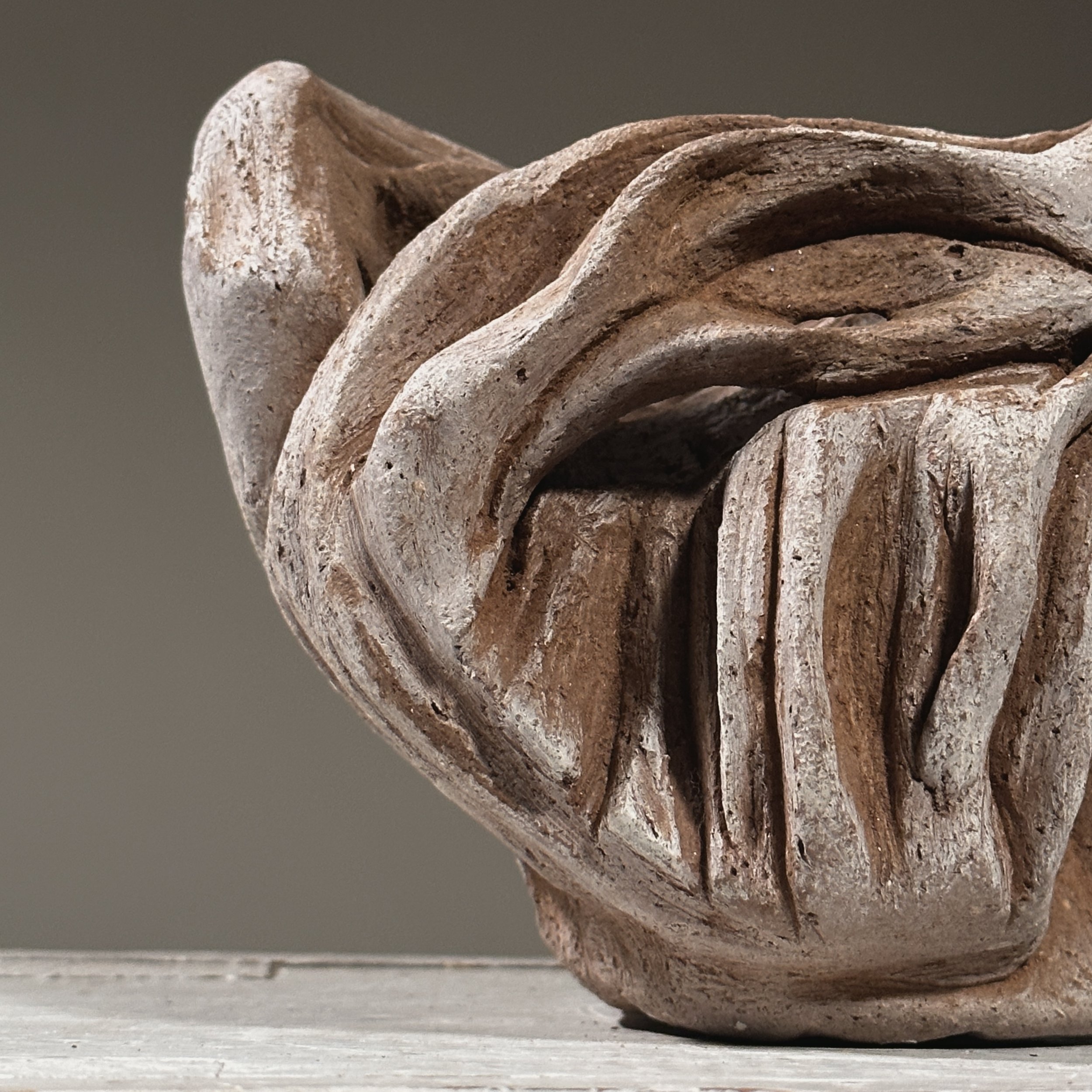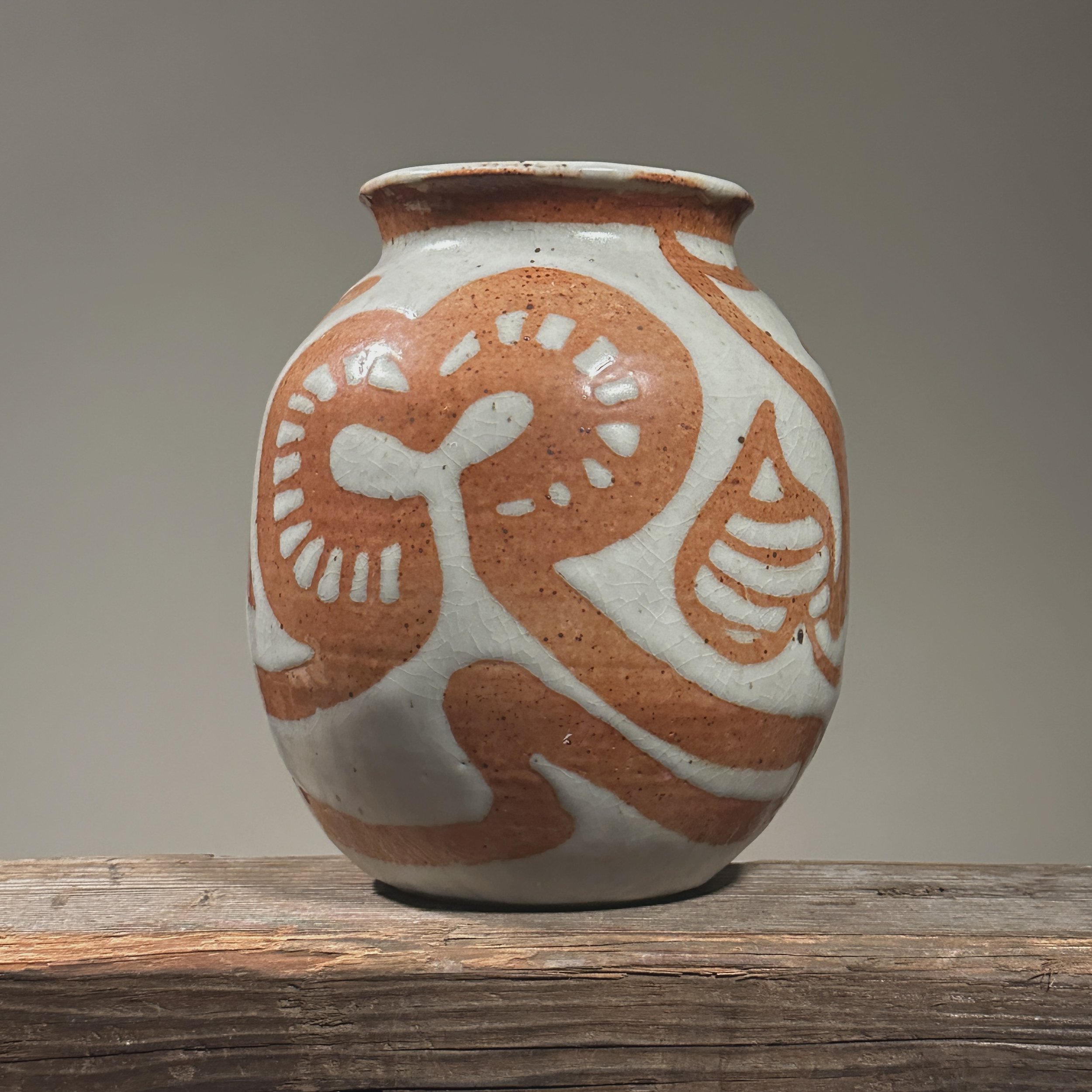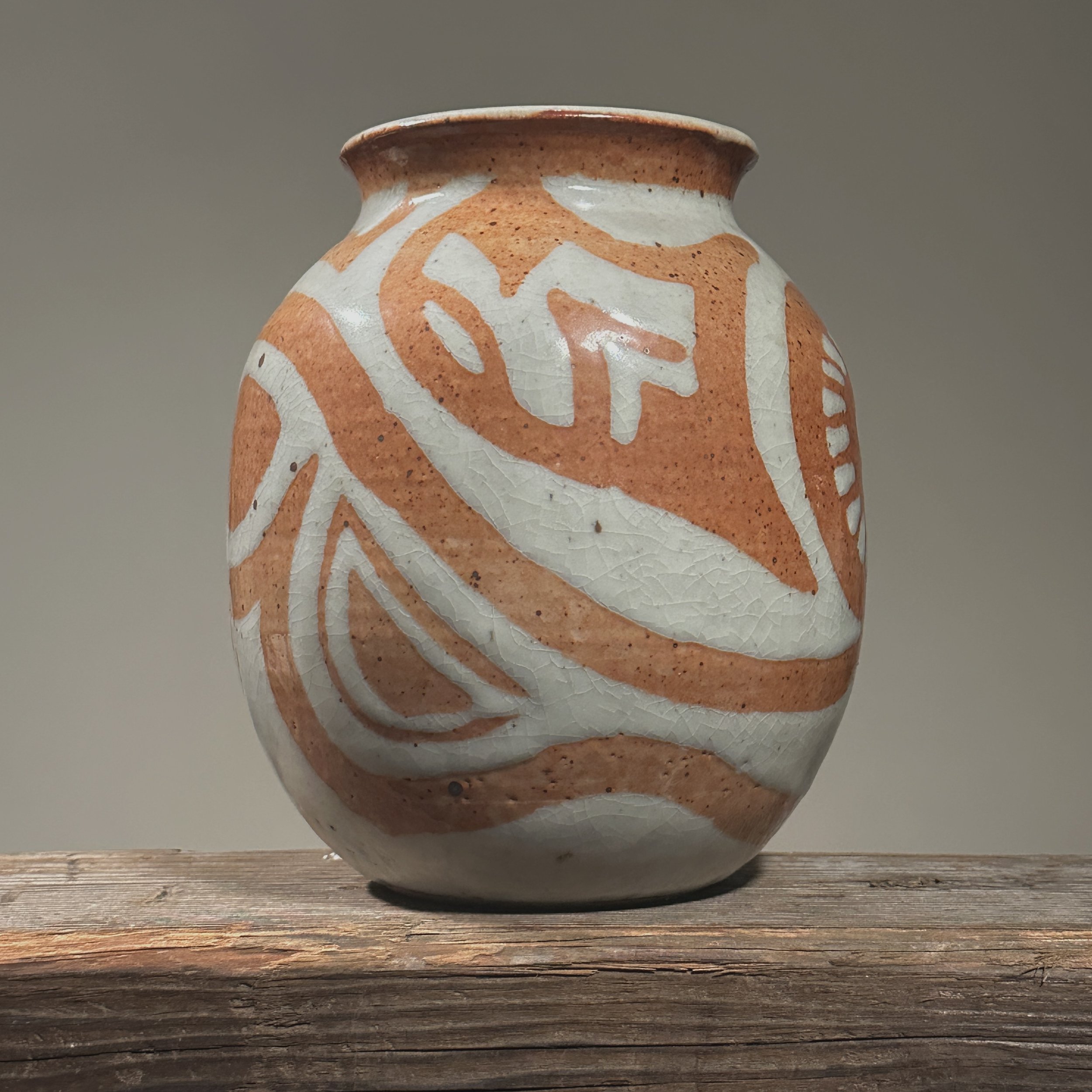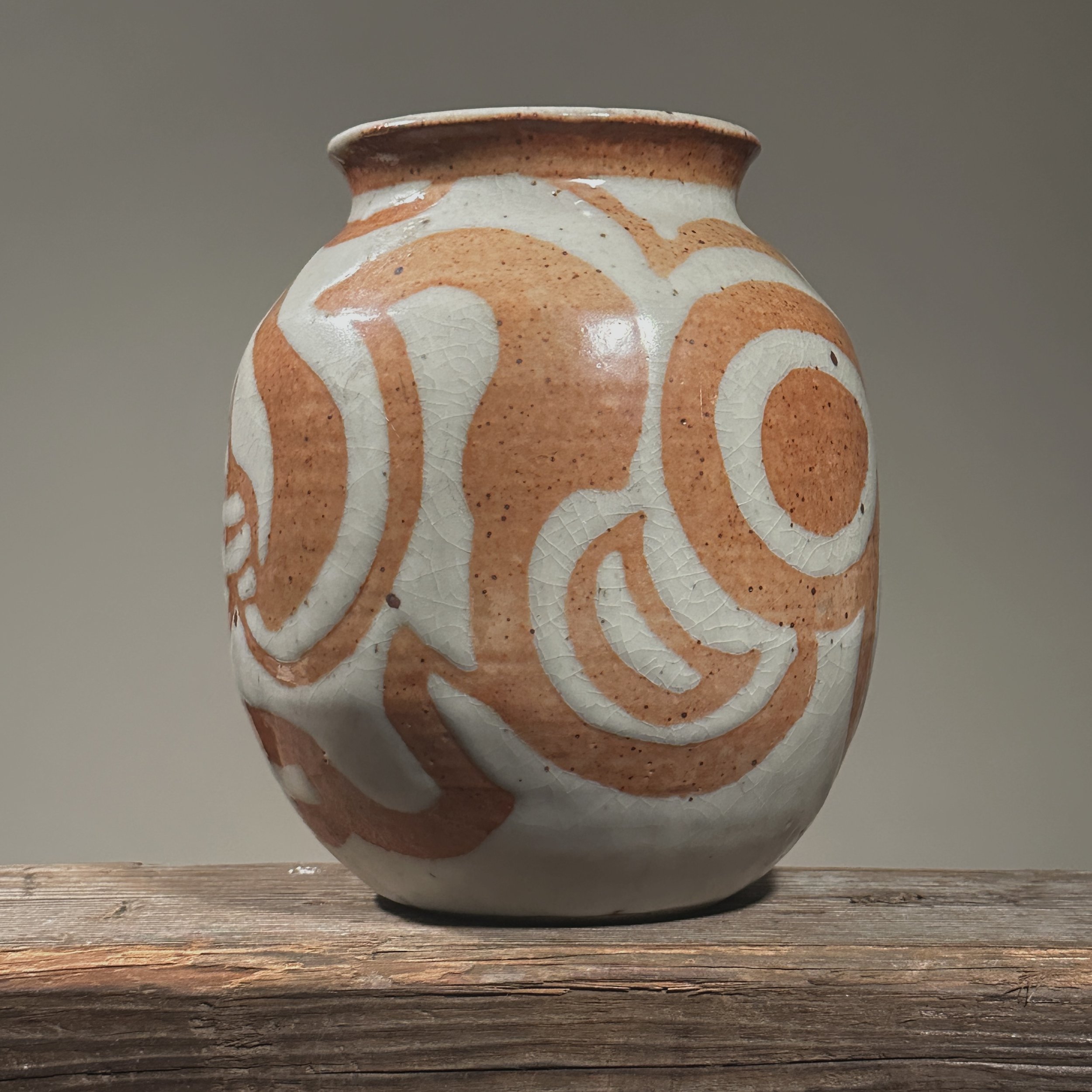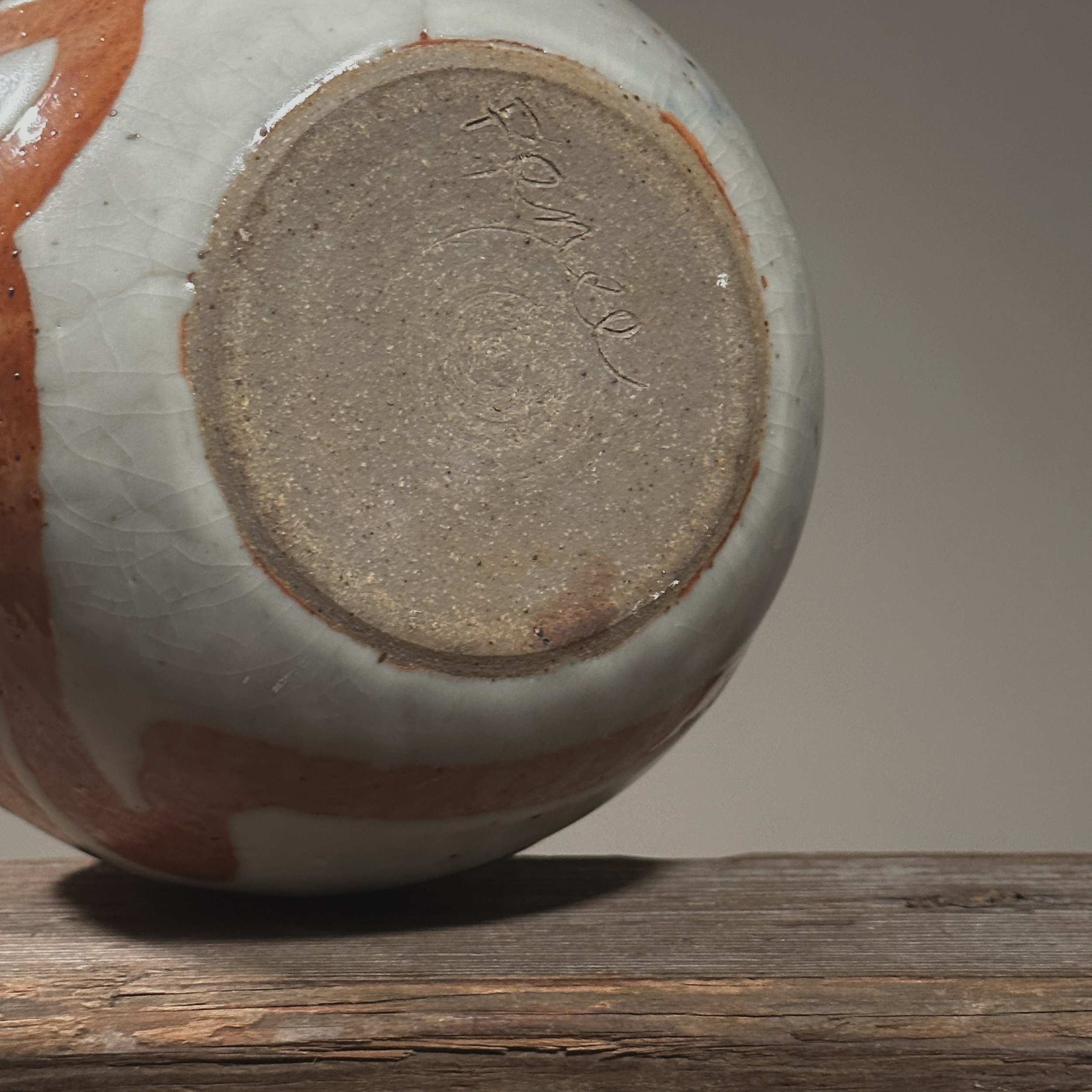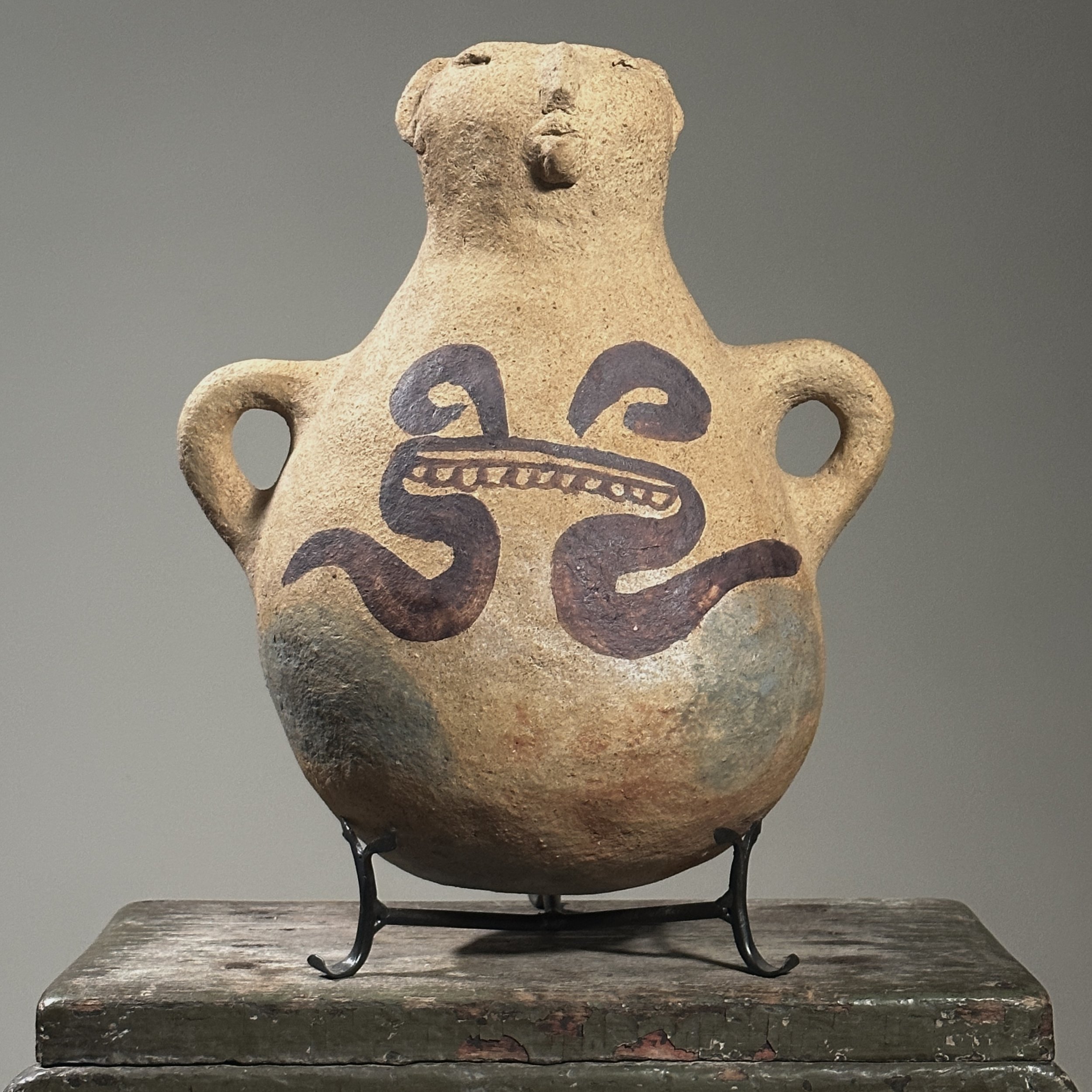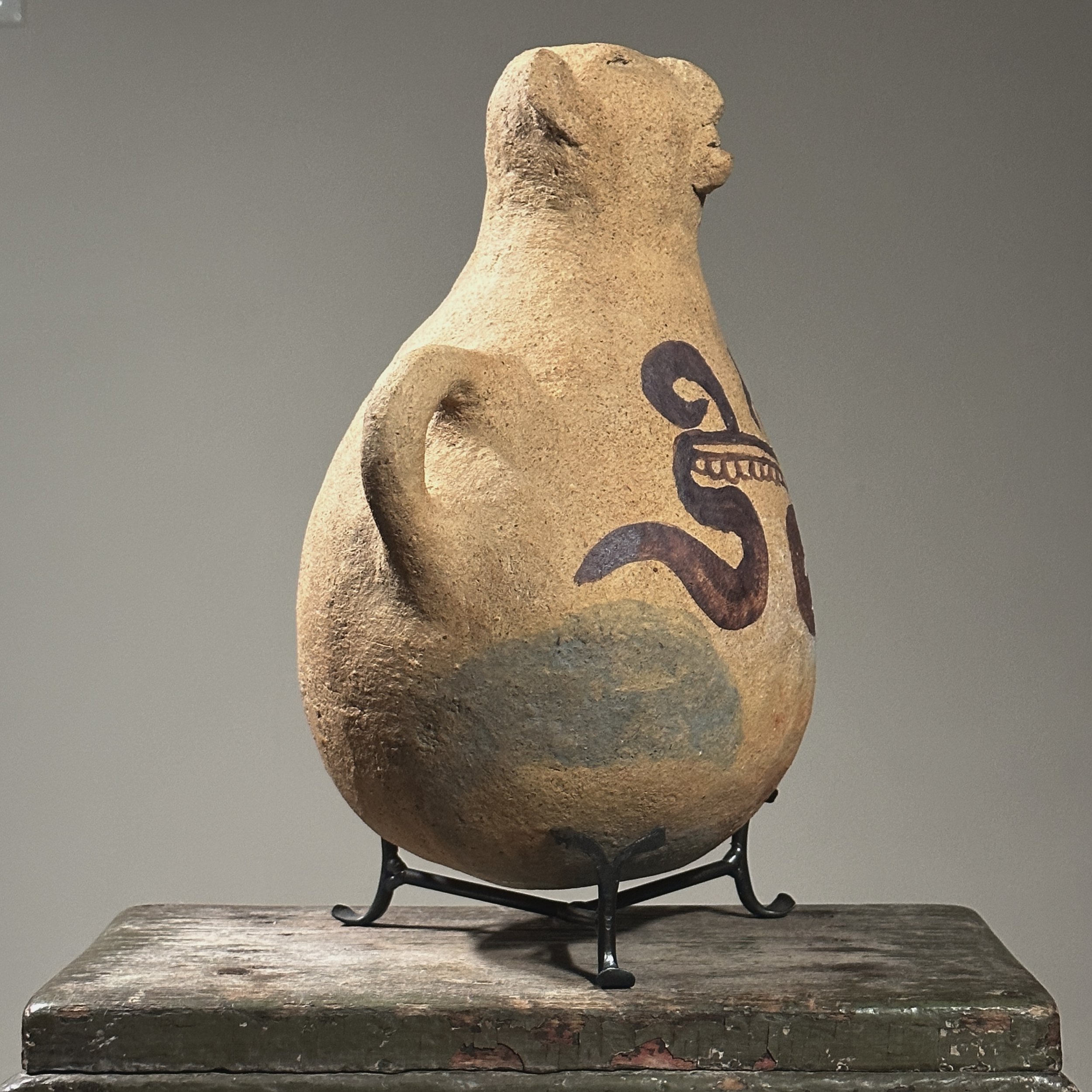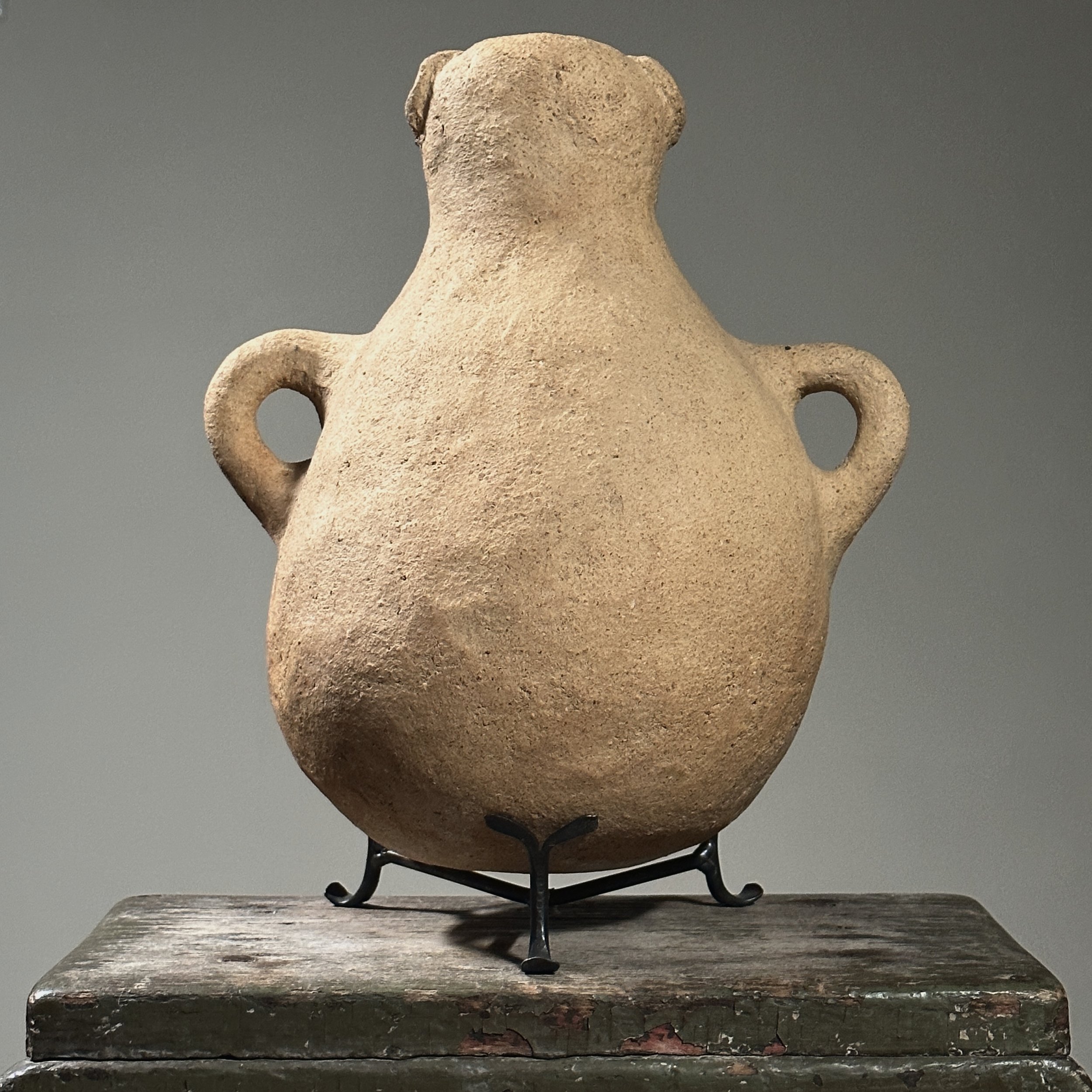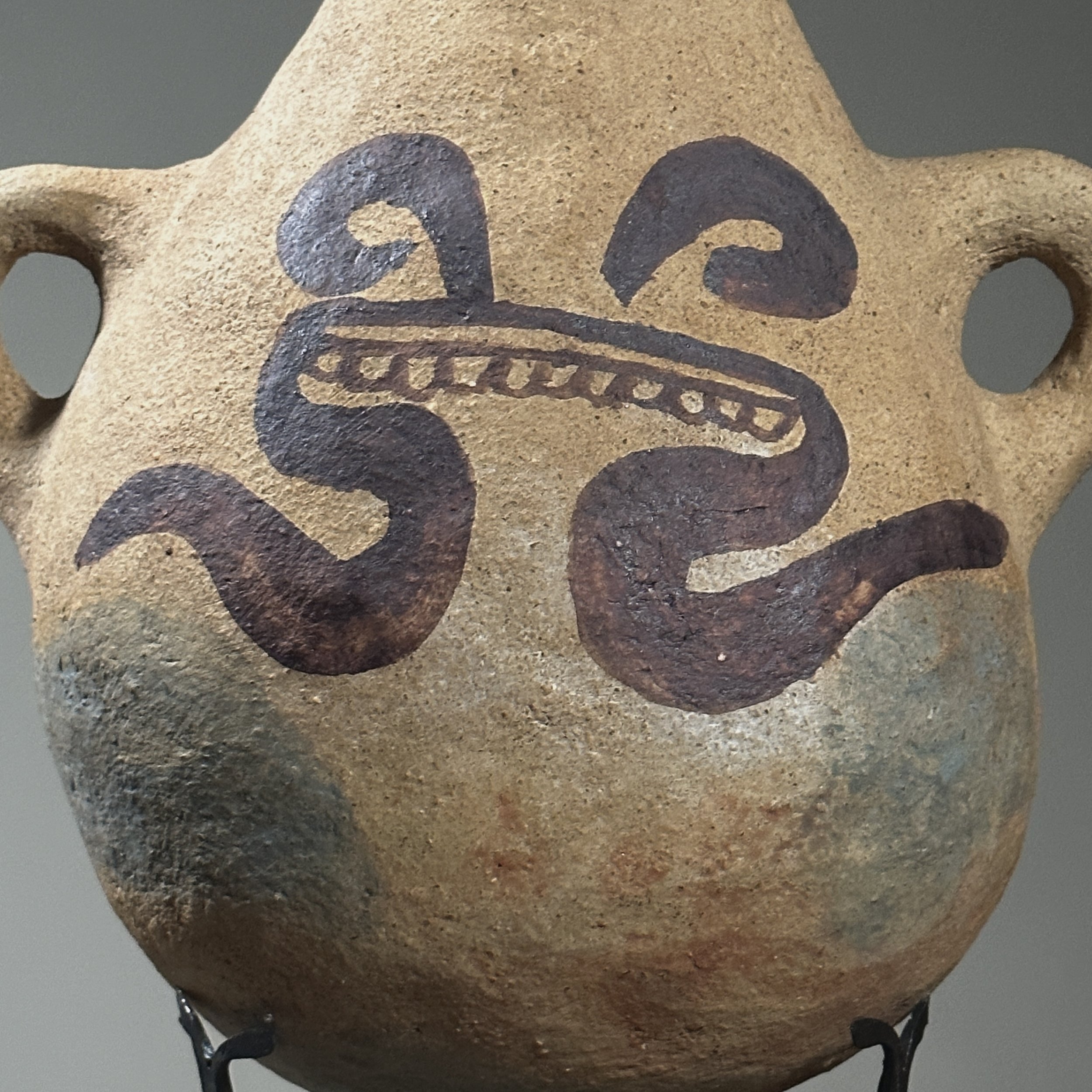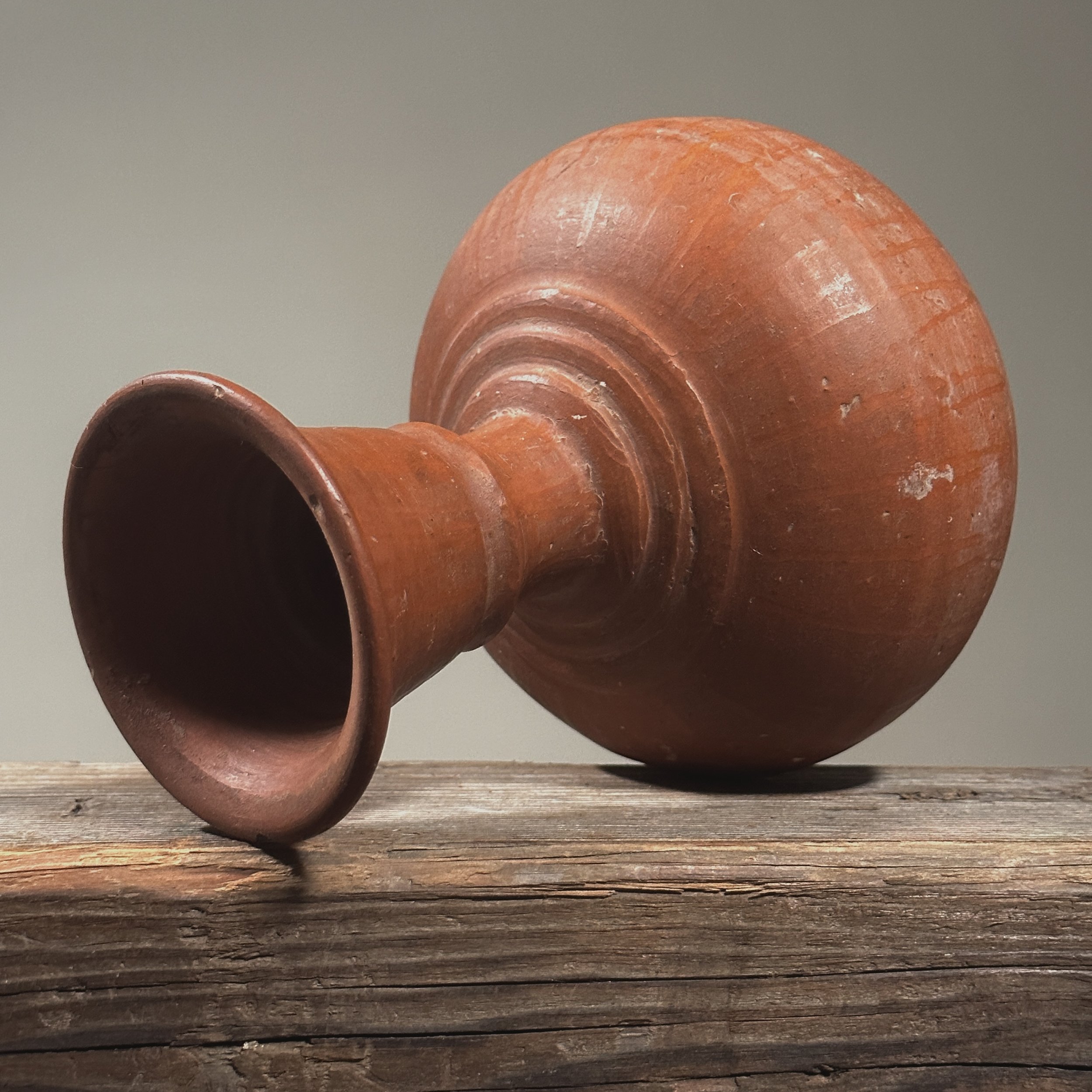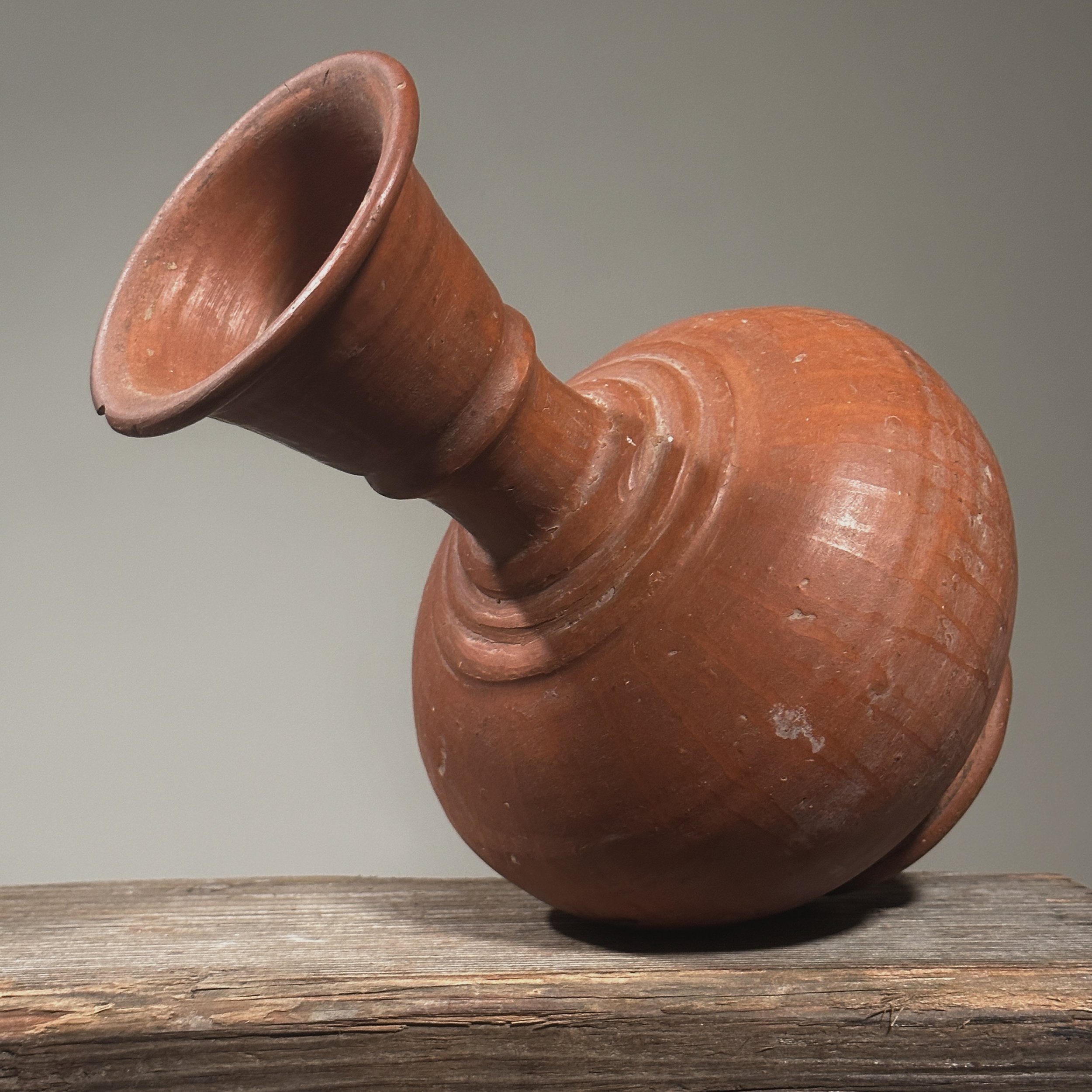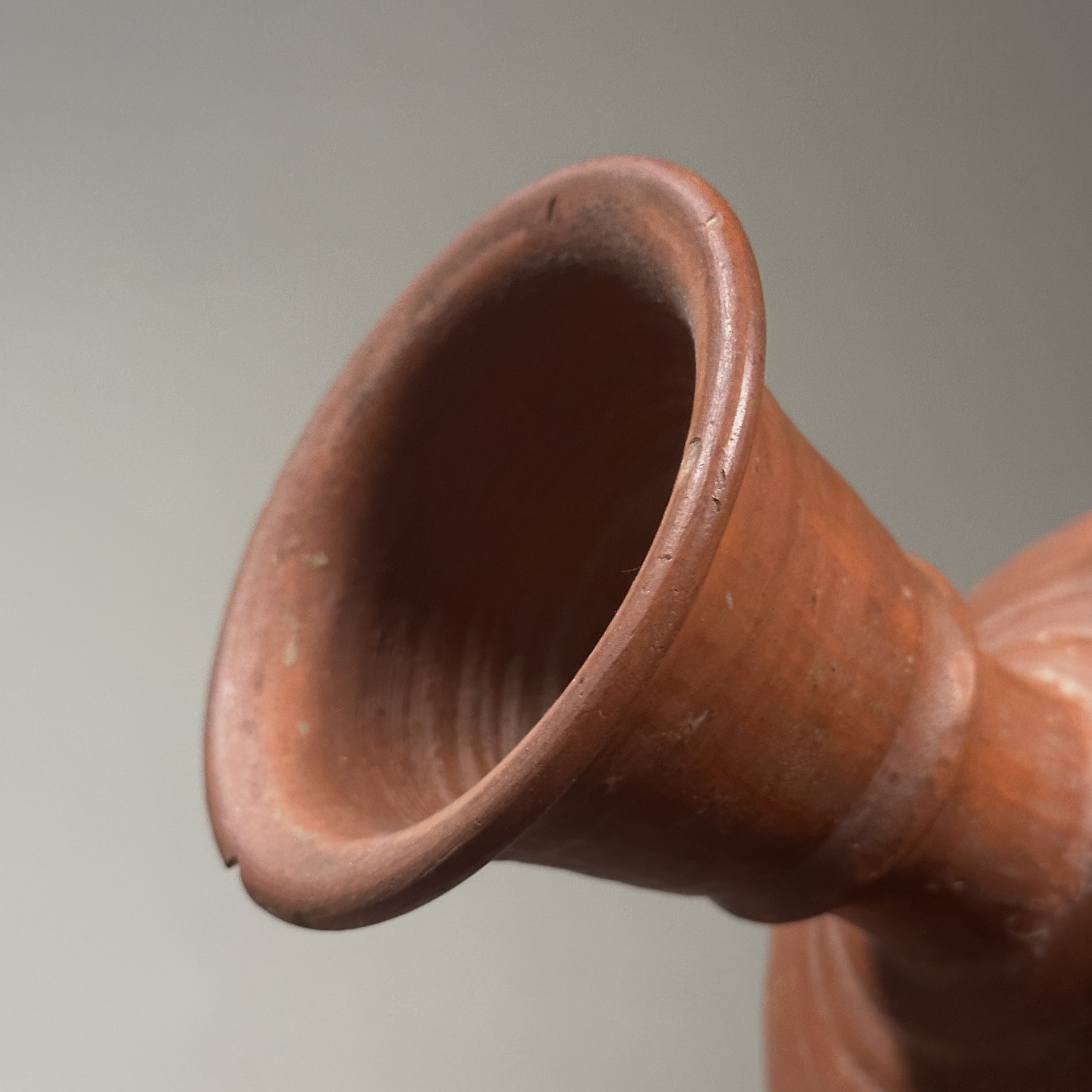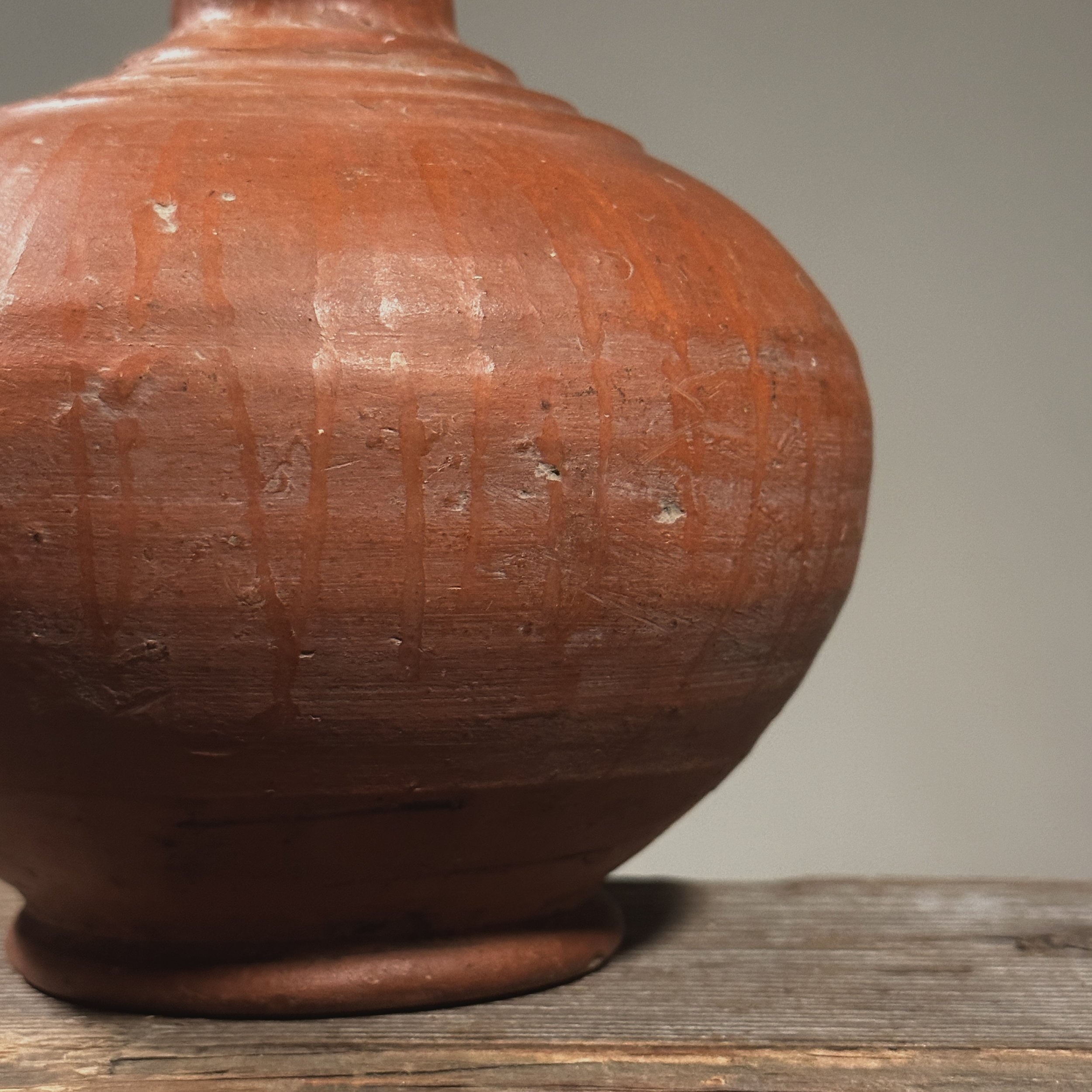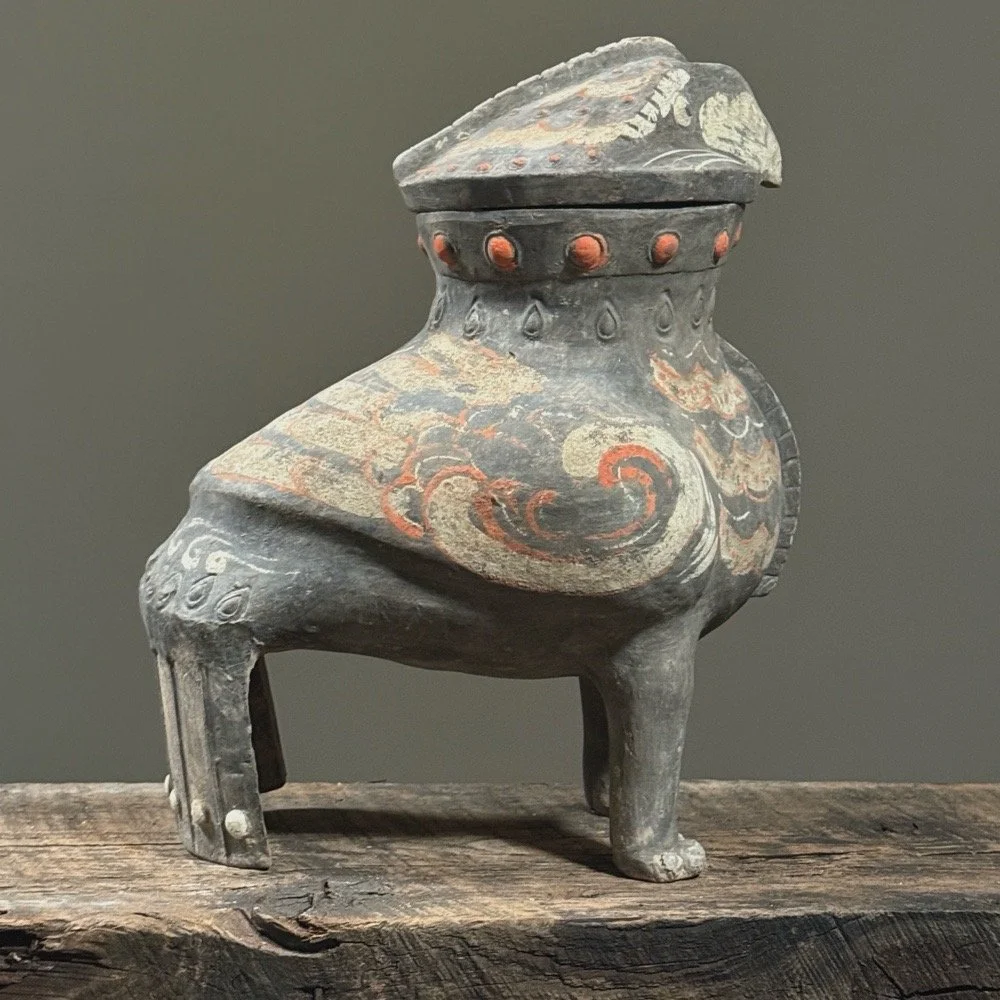 Image 1 of 10
Image 1 of 10

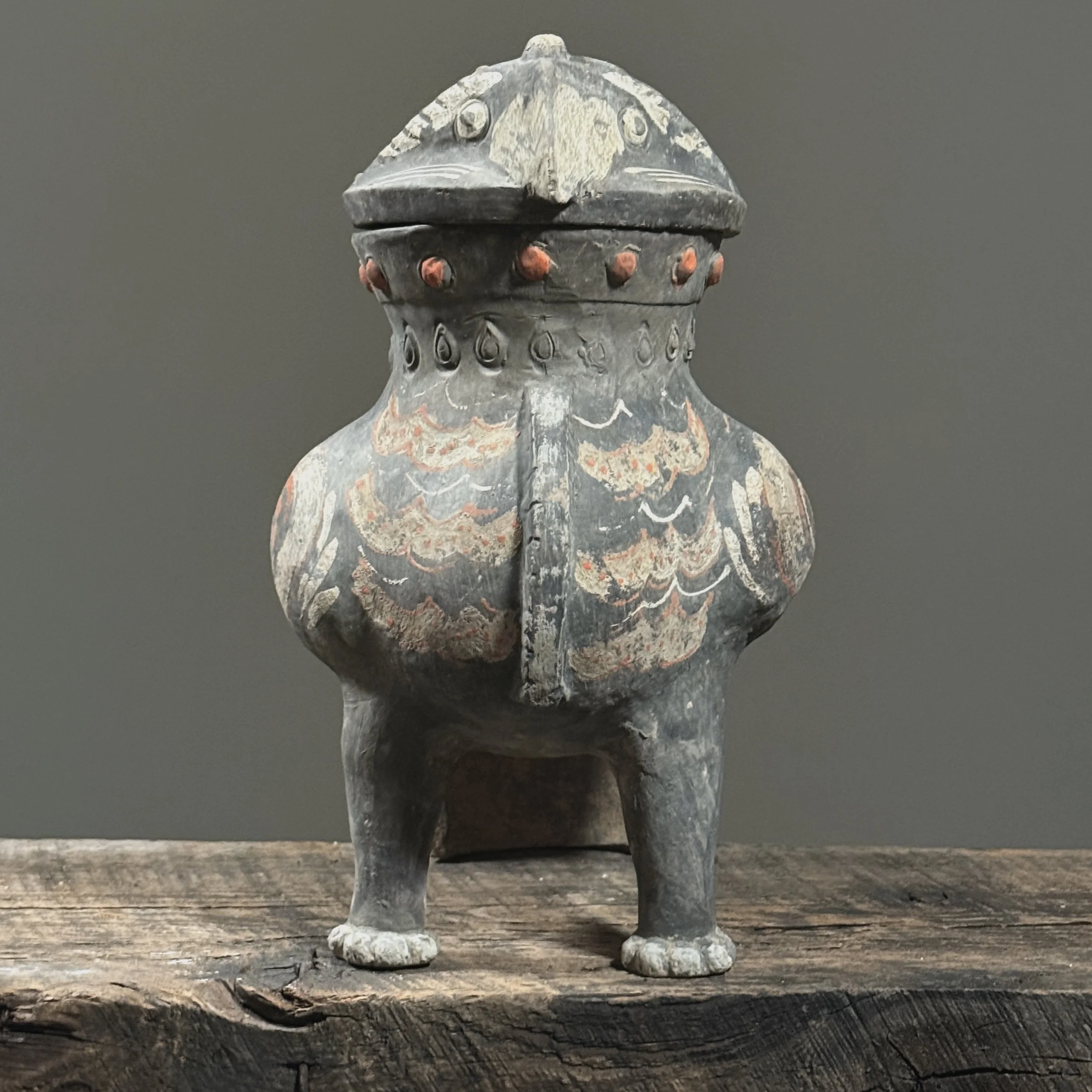 Image 2 of 10
Image 2 of 10

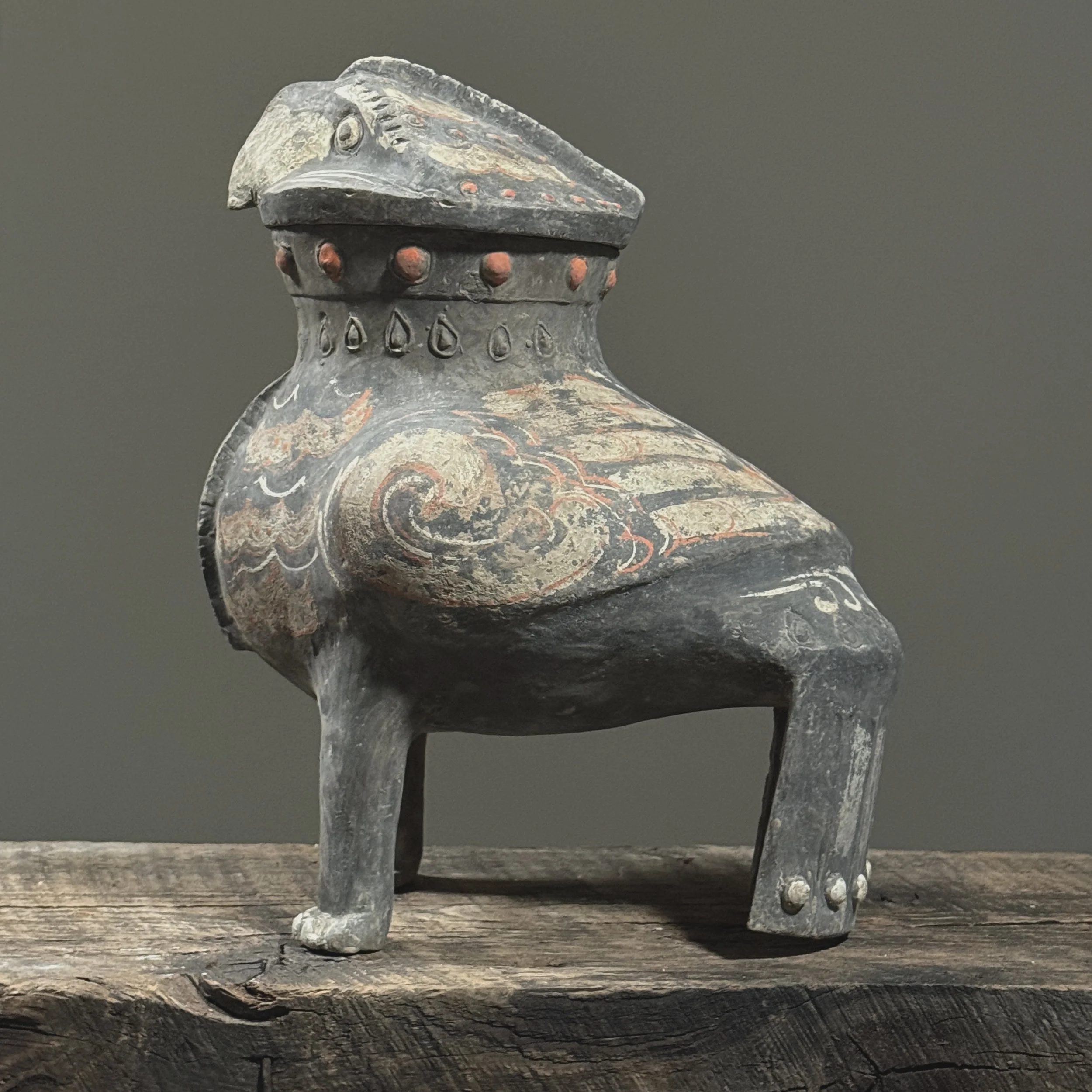 Image 3 of 10
Image 3 of 10

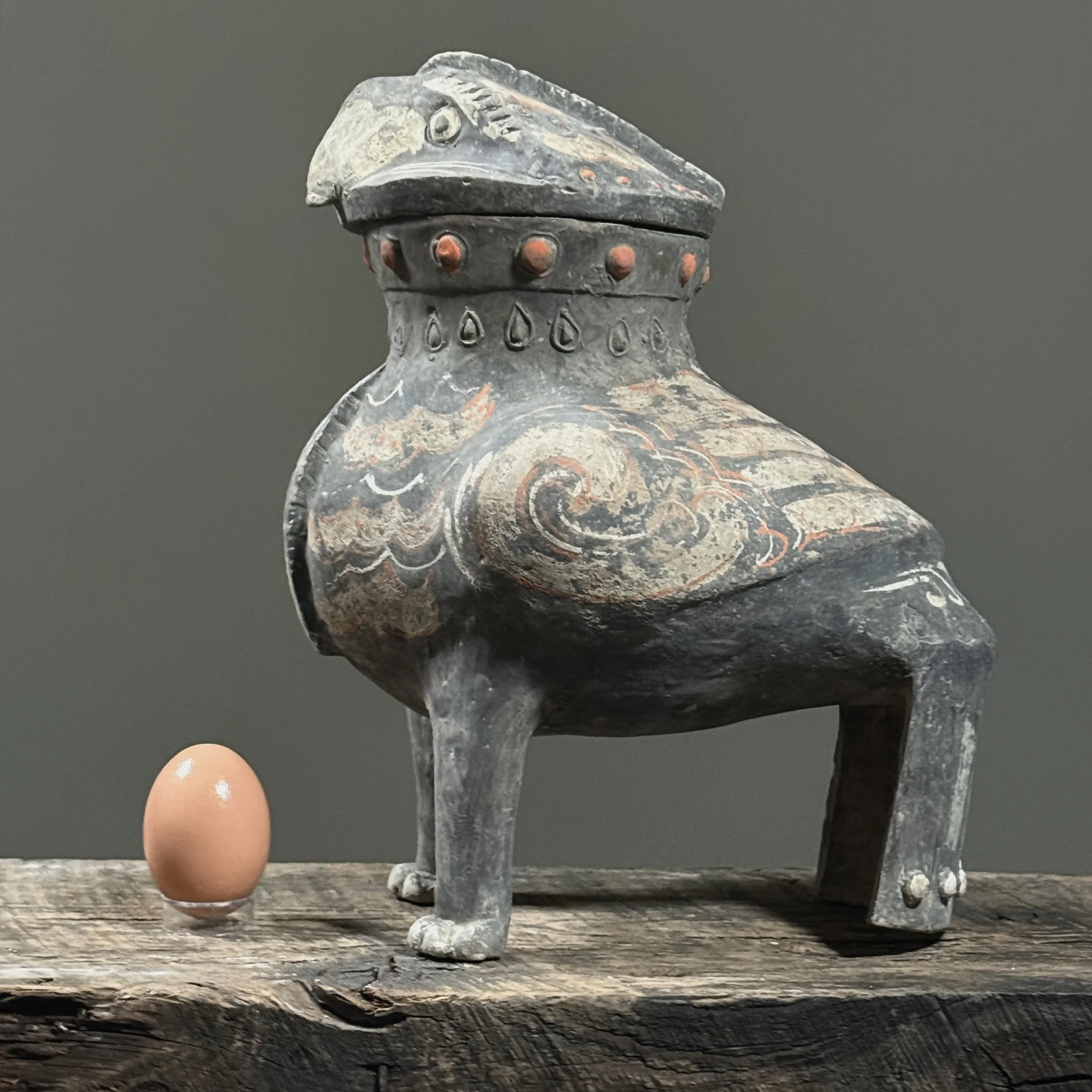 Image 4 of 10
Image 4 of 10

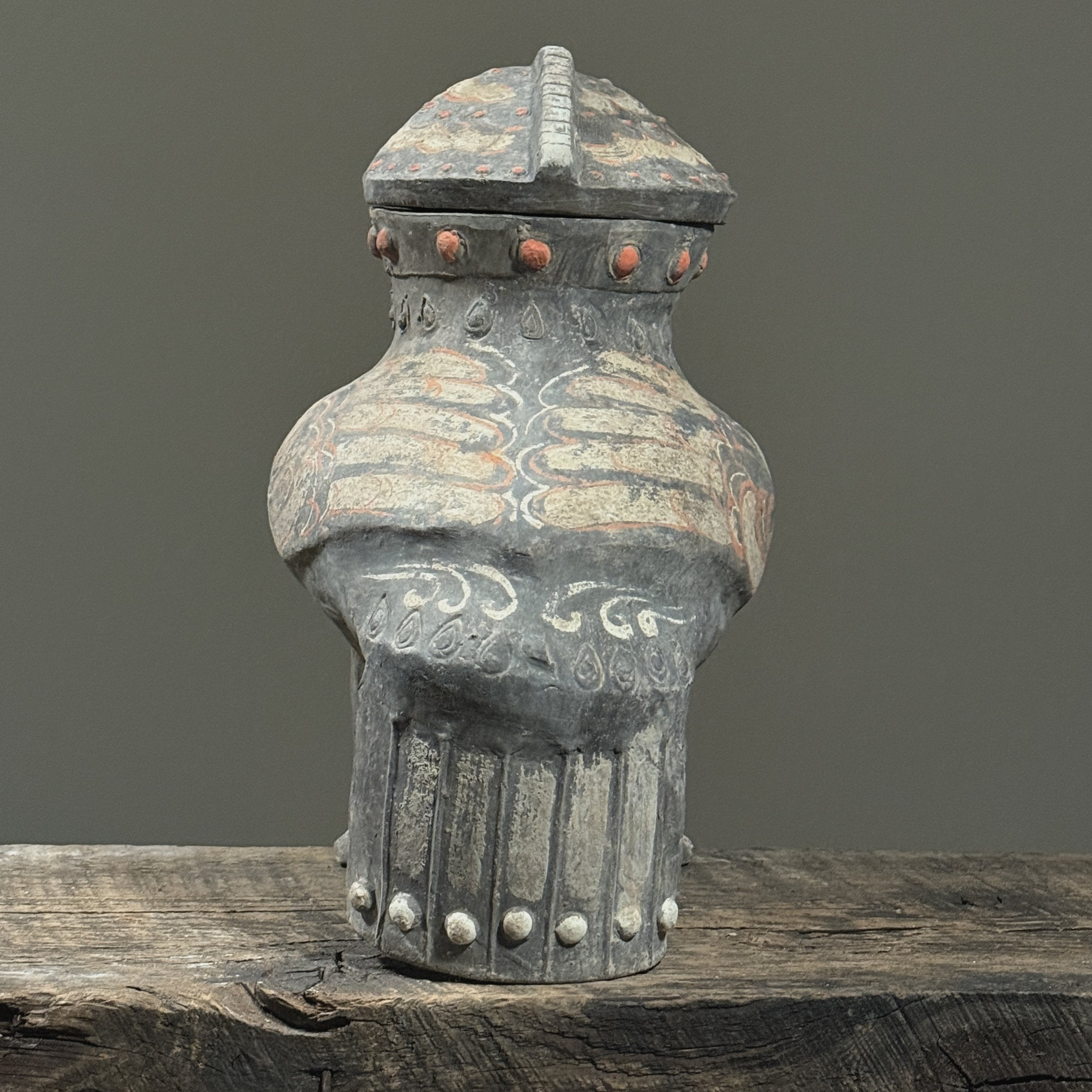 Image 5 of 10
Image 5 of 10

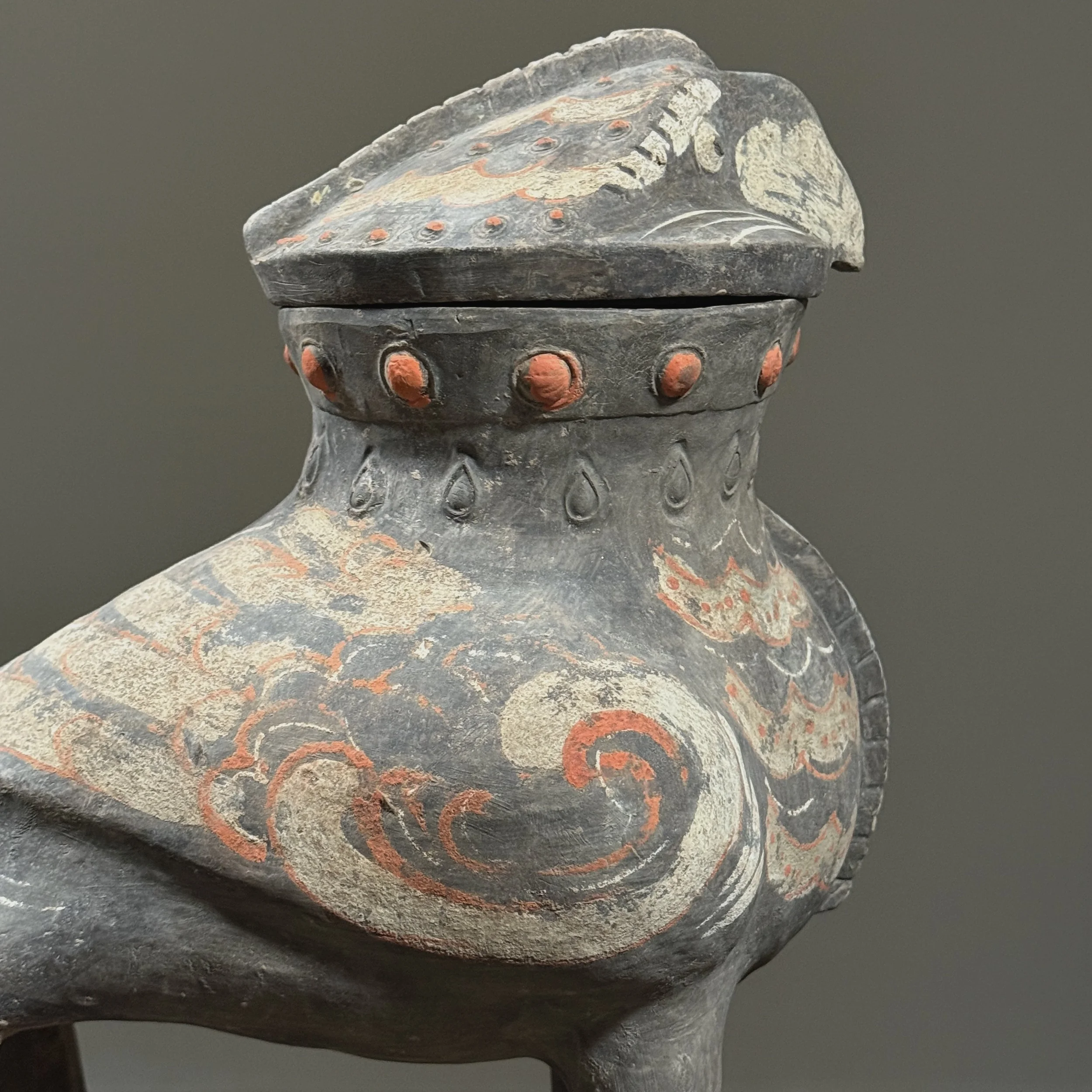 Image 6 of 10
Image 6 of 10

 Image 7 of 10
Image 7 of 10

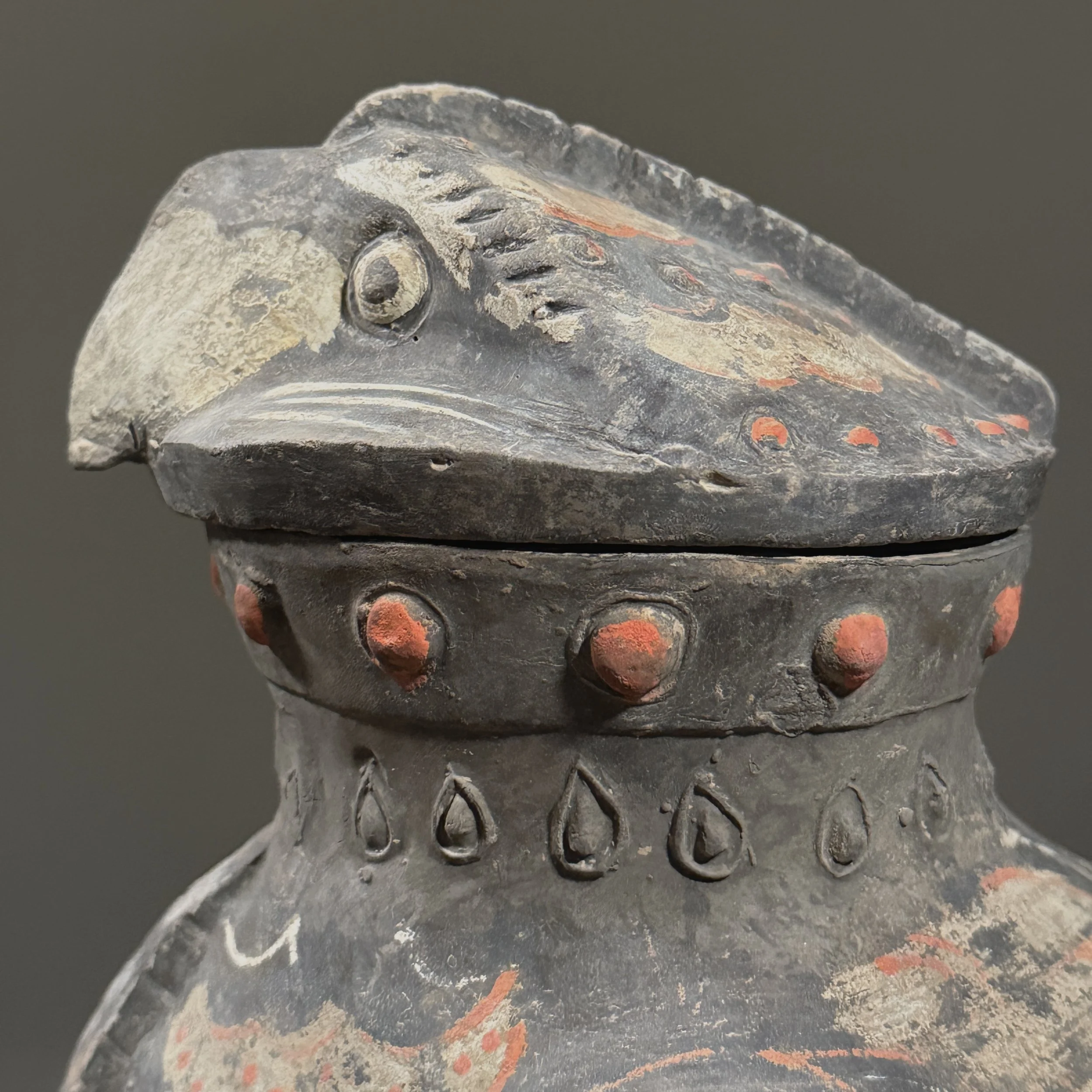 Image 8 of 10
Image 8 of 10

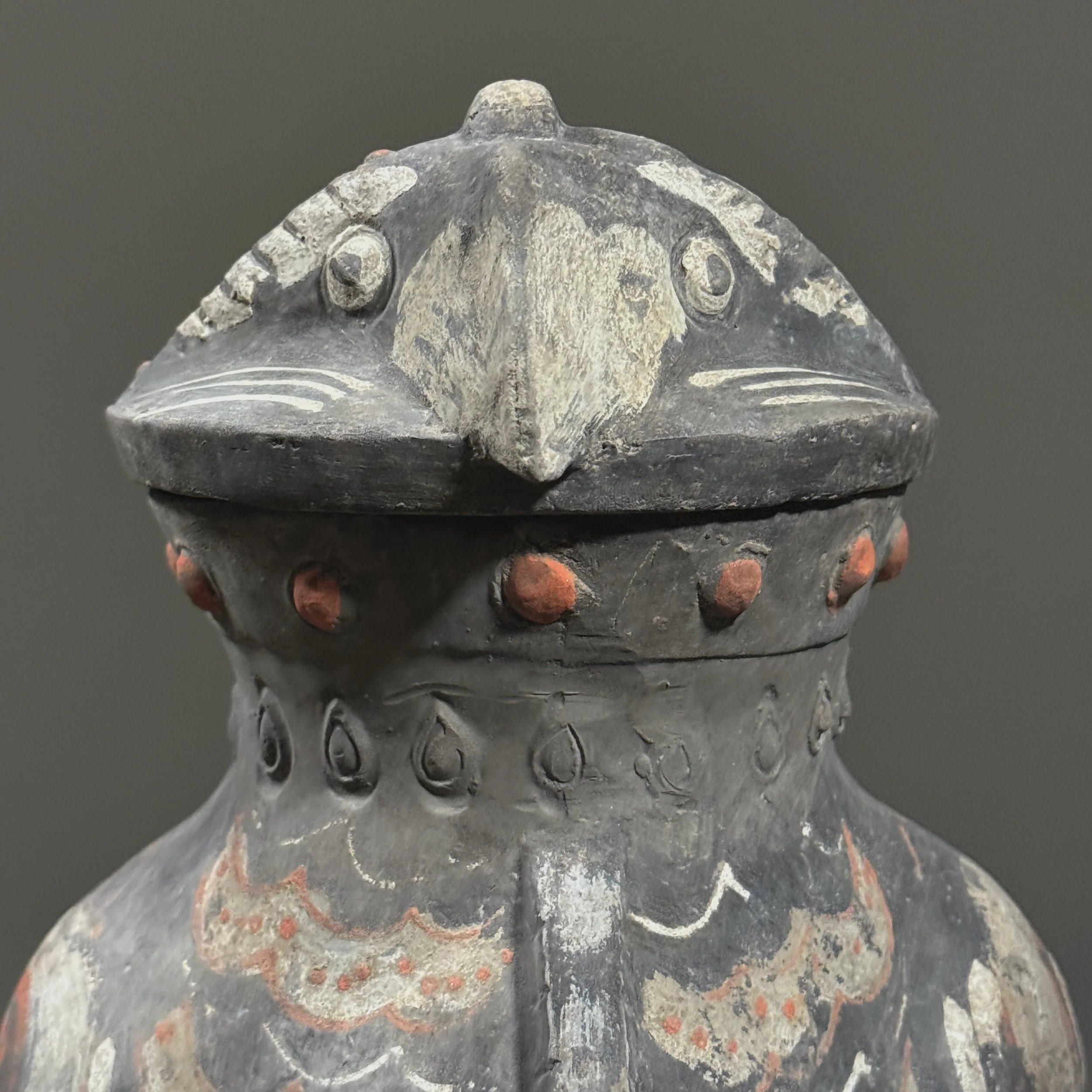 Image 9 of 10
Image 9 of 10

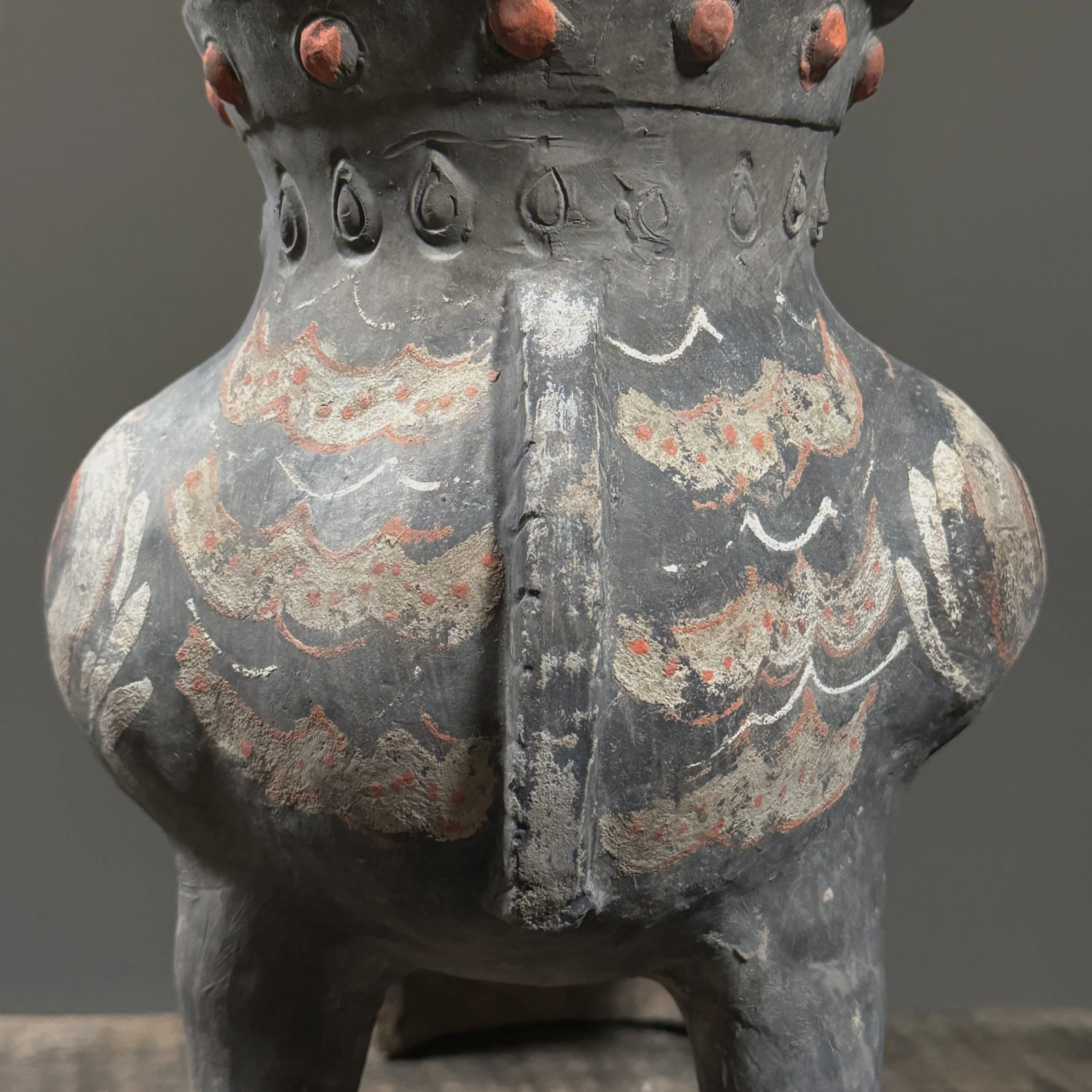 Image 10 of 10
Image 10 of 10











Antique Chinese Polychrome Terracotta Owl Shaped Zun Wine Vessel
Antique Chinese Polychrome Terracotta Owl Shaped Zun Wine Vessel
China, Late Qing to Early Republic period (late 19th–early 20th century)
Hand-painted terracotta
This sculptural zun type vessel is modeled in the form of an owl. The lid is shaped as the bird’s head, while the body is hand painted in polychrome pigments.
In good, age appropriate condition with surface wear and pigment losses consistent with age and handling. Please refer to the photographs for condition details.
Dimensions: 12 × 9.75 × 7.5 in. (30.5 × 24.8 × 19 cm)
Historical Note
The zun (尊) is an ancient Chinese vessel form historically associated with the ritual offering and consumption of wine. Bronze zun vessels first appear in the Shang (c. 1600–1046 BCE) and Zhou (c.1046–256 BCE) dynasties and were integral to ancestral rites; their forms and decorative motifs (taotie masks, flanges, and zoomorphic silhouettes) established a visual language that has been referenced by makers for ages.
Birds and owls occasionally appear in Chinese decorative arts as emblems of vigilance and watchfulness. The practice of producing earthenware and painted ceramic vessels in archaizing shapes became particularly widespread in later periods, and was revitalized again in the 19th–20th centuries as collectors and scholars renewed interest in antiquities. Polychrome terracotta wares of the late Qing Republic era often emulate ancient bronzes.
The object’s terracotta body and hand applied polychrome pigments indicate production in a studio or workshop context rather than in a large imperial kiln. Surface wear and pigment loss are consistent with age and handling.
While the form references ritual bronzes of the Shang Zhou, this piece is best understood as a historic (likely late 19th early 20th century) decorative or ritual inspired vessel that reflects continued cultural interest in archaic forms, rather than as an actual archaic bronze zun.
Antique Chinese Polychrome Terracotta Owl Shaped Zun Wine Vessel
China, Late Qing to Early Republic period (late 19th–early 20th century)
Hand-painted terracotta
This sculptural zun type vessel is modeled in the form of an owl. The lid is shaped as the bird’s head, while the body is hand painted in polychrome pigments.
In good, age appropriate condition with surface wear and pigment losses consistent with age and handling. Please refer to the photographs for condition details.
Dimensions: 12 × 9.75 × 7.5 in. (30.5 × 24.8 × 19 cm)
Historical Note
The zun (尊) is an ancient Chinese vessel form historically associated with the ritual offering and consumption of wine. Bronze zun vessels first appear in the Shang (c. 1600–1046 BCE) and Zhou (c.1046–256 BCE) dynasties and were integral to ancestral rites; their forms and decorative motifs (taotie masks, flanges, and zoomorphic silhouettes) established a visual language that has been referenced by makers for ages.
Birds and owls occasionally appear in Chinese decorative arts as emblems of vigilance and watchfulness. The practice of producing earthenware and painted ceramic vessels in archaizing shapes became particularly widespread in later periods, and was revitalized again in the 19th–20th centuries as collectors and scholars renewed interest in antiquities. Polychrome terracotta wares of the late Qing Republic era often emulate ancient bronzes.
The object’s terracotta body and hand applied polychrome pigments indicate production in a studio or workshop context rather than in a large imperial kiln. Surface wear and pigment loss are consistent with age and handling.
While the form references ritual bronzes of the Shang Zhou, this piece is best understood as a historic (likely late 19th early 20th century) decorative or ritual inspired vessel that reflects continued cultural interest in archaic forms, rather than as an actual archaic bronze zun.


